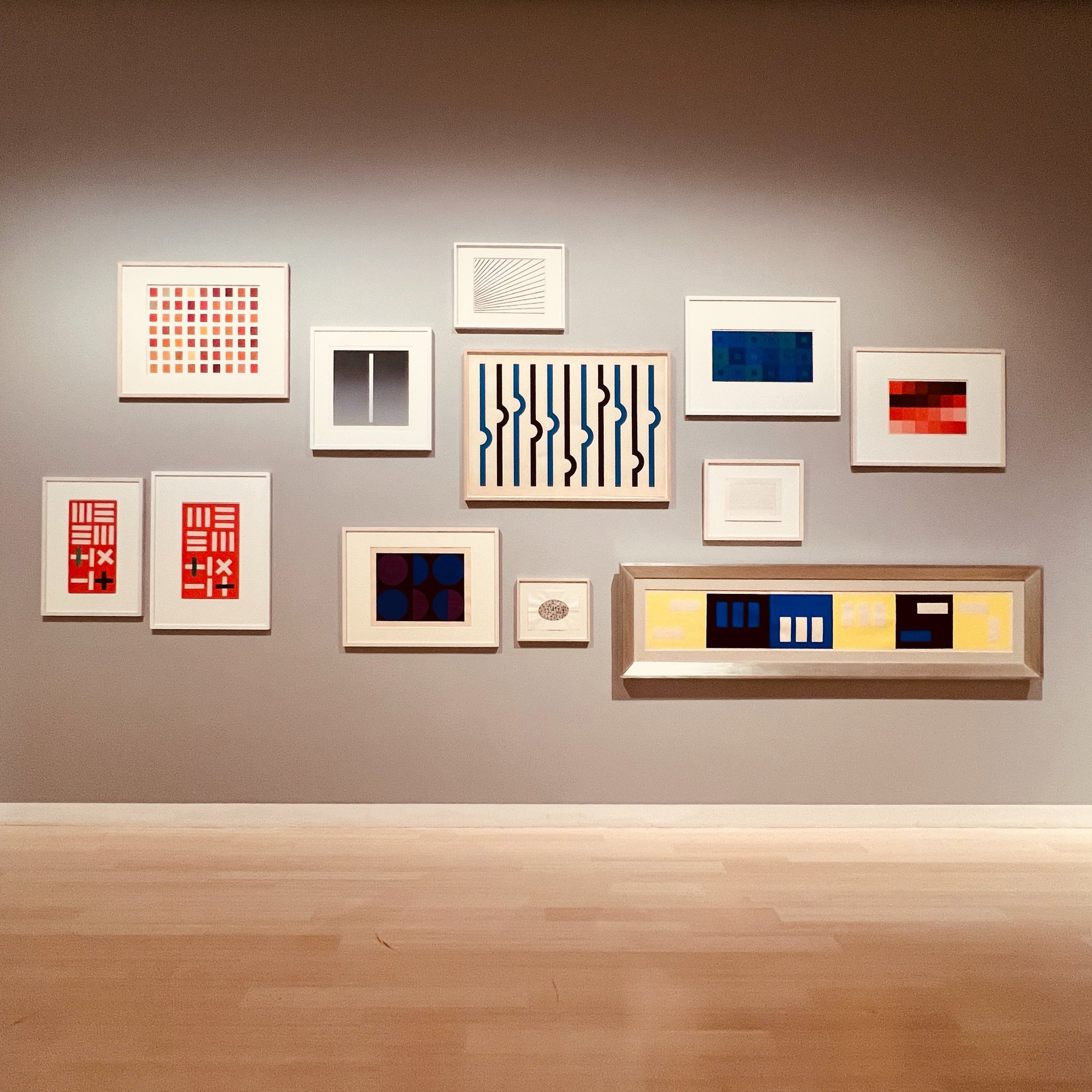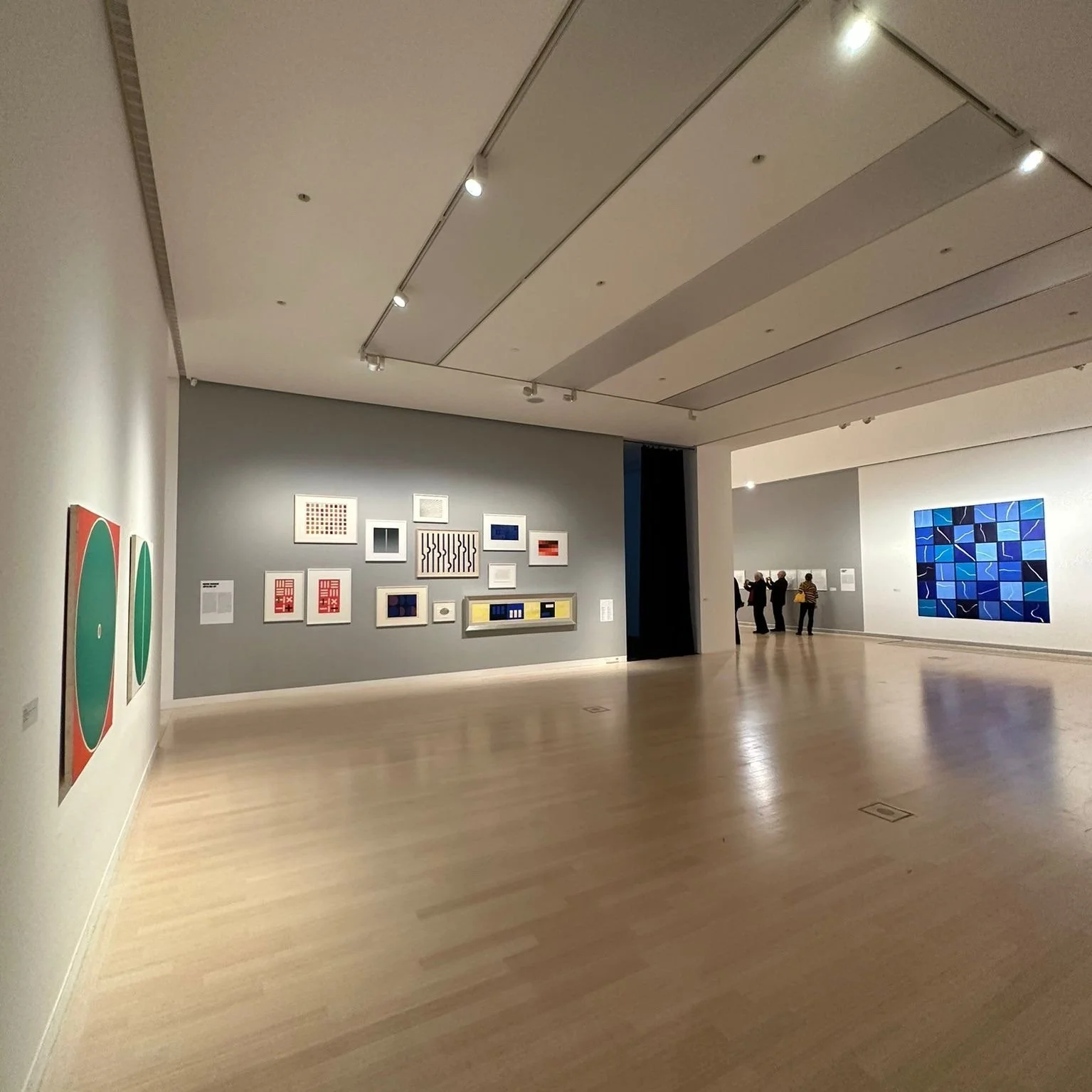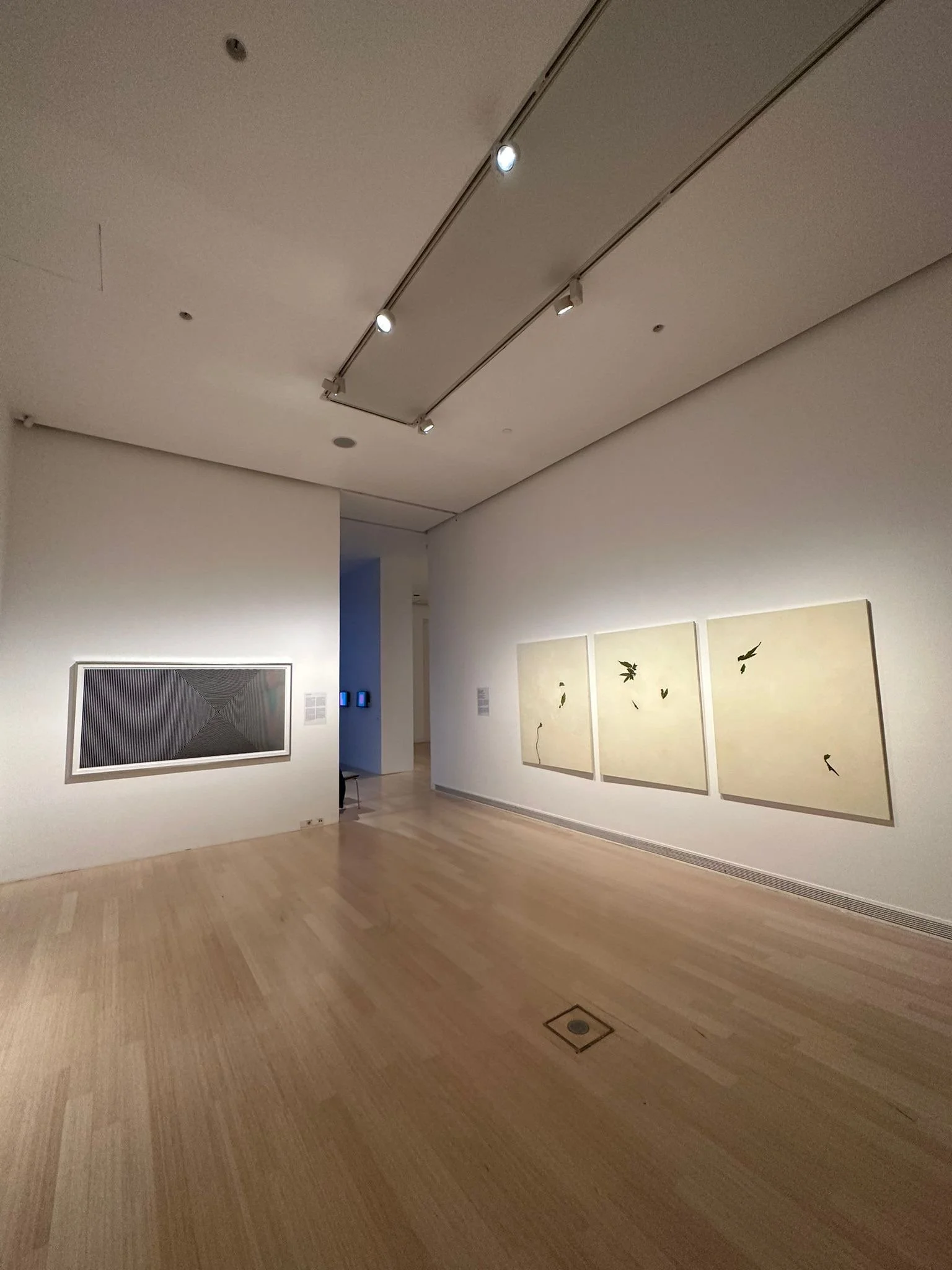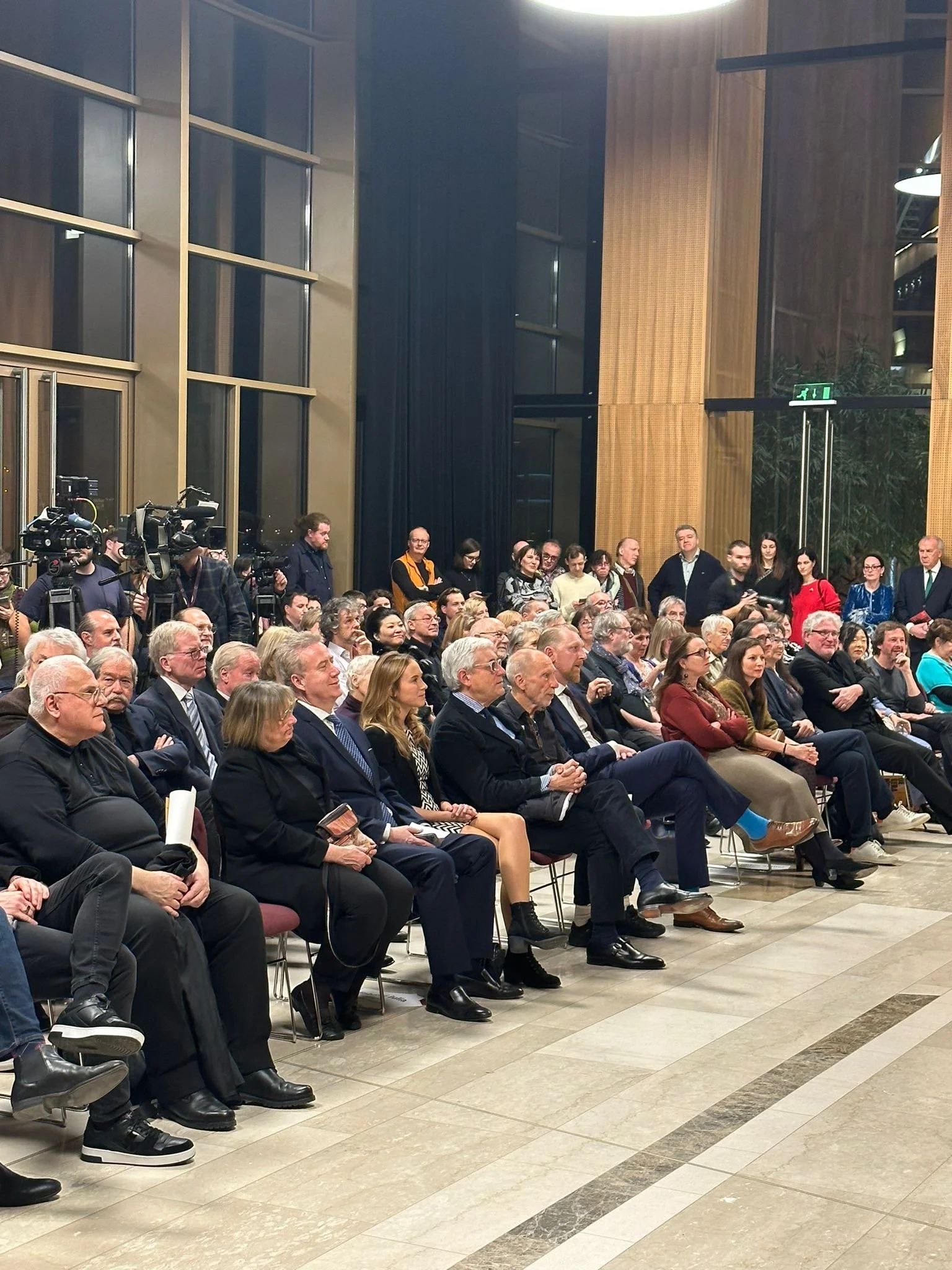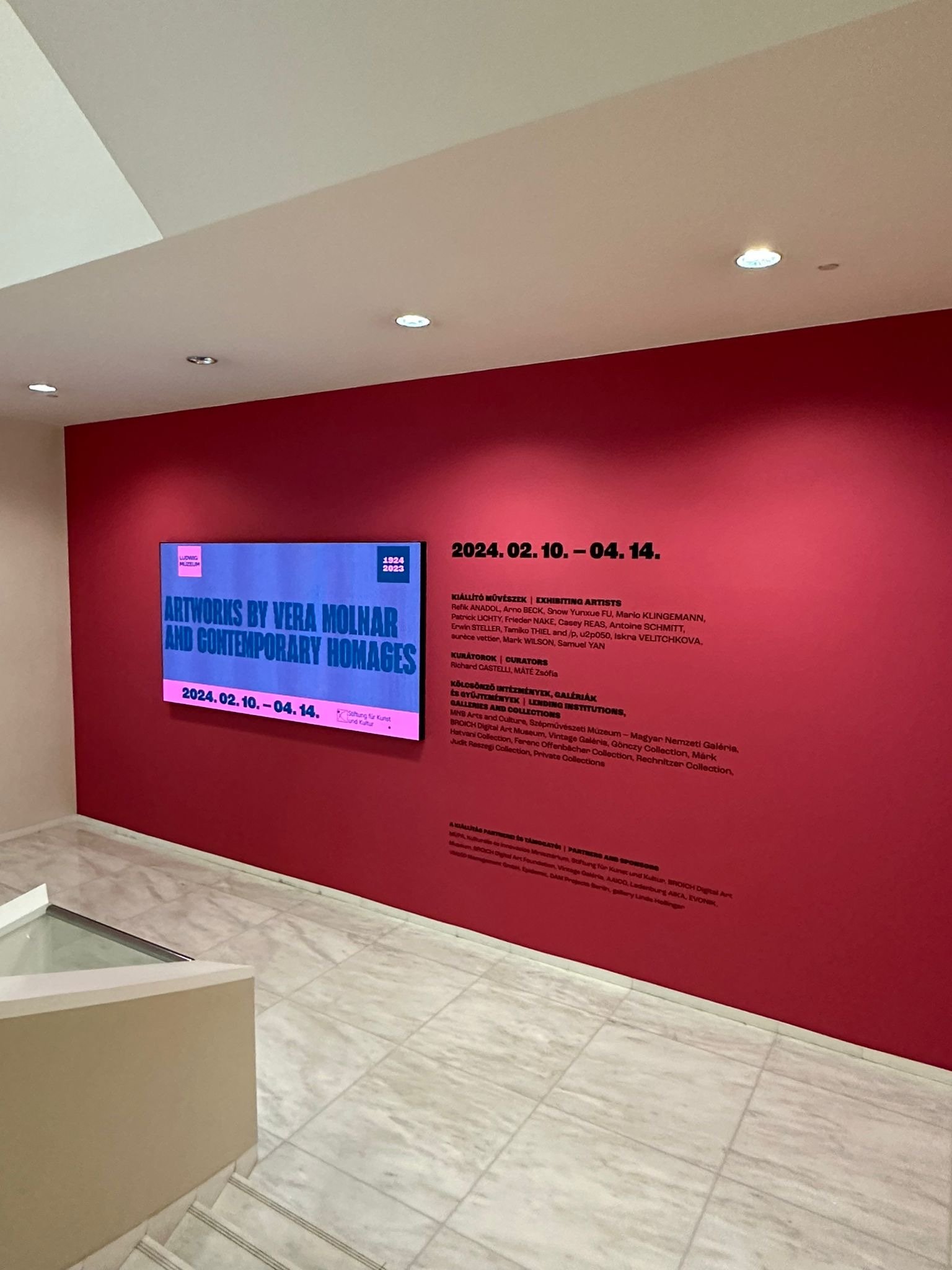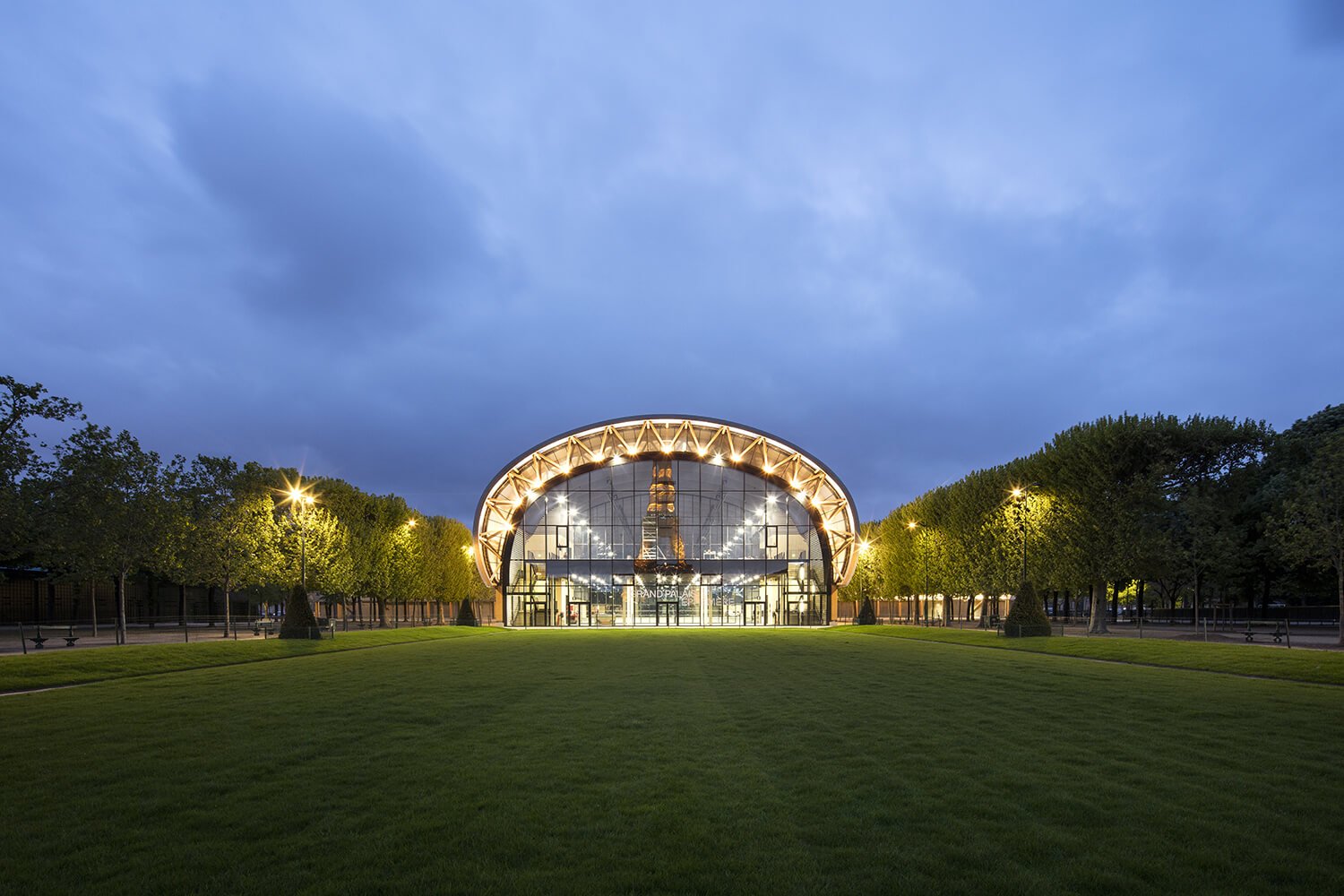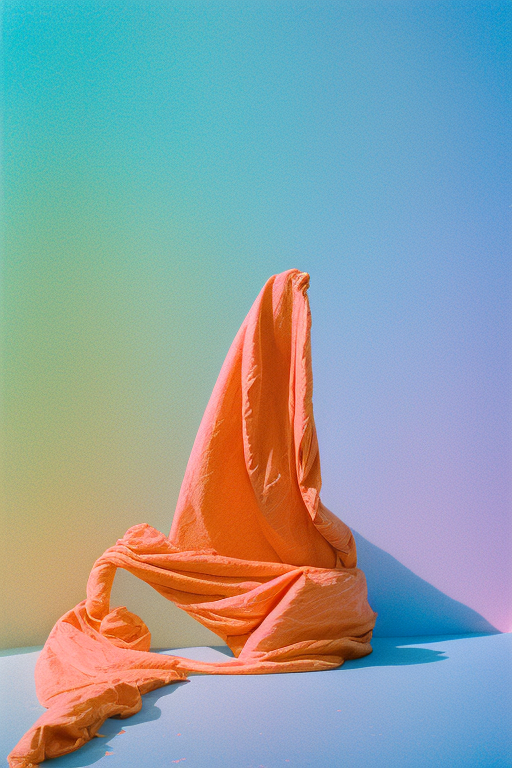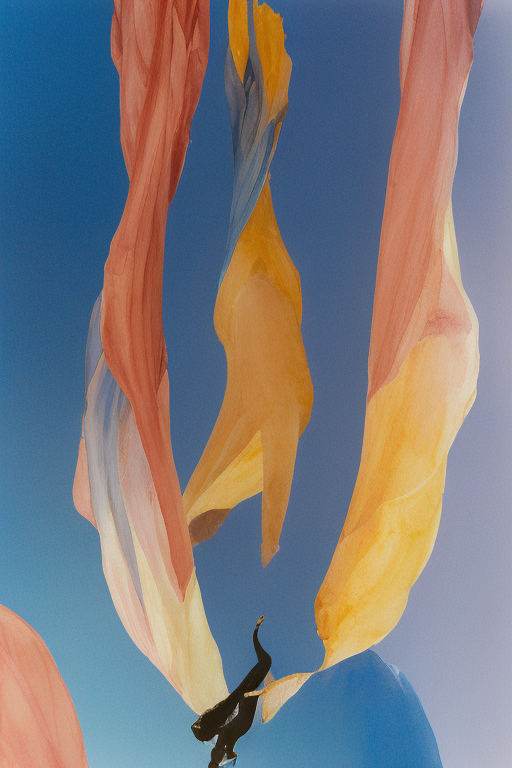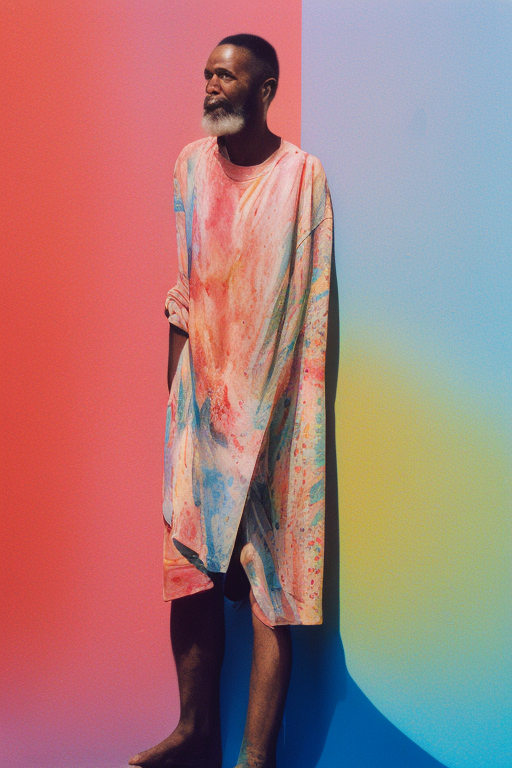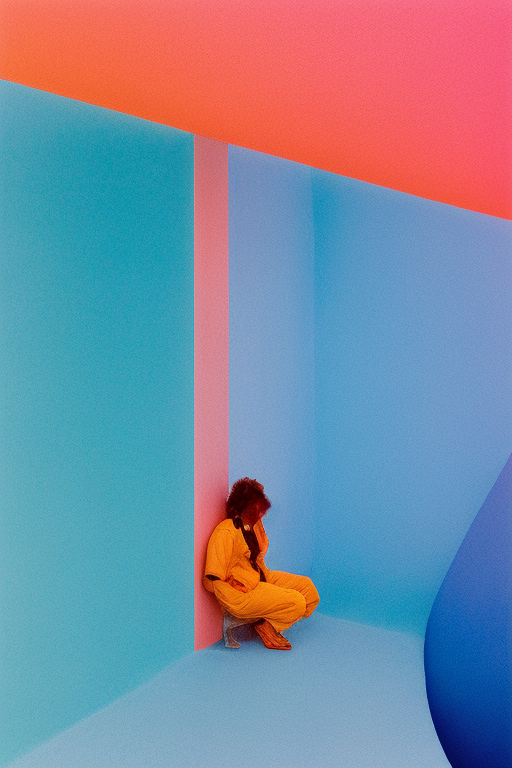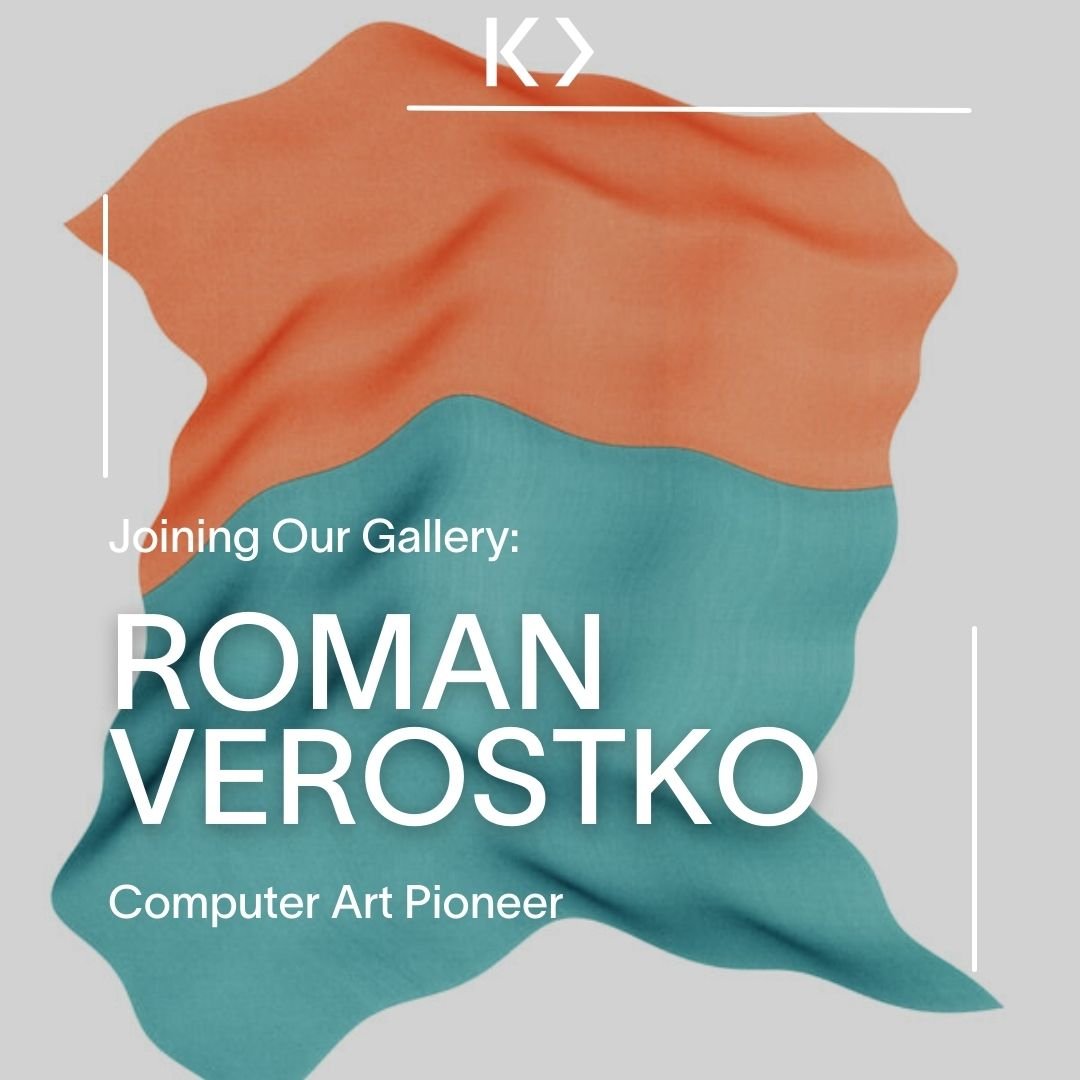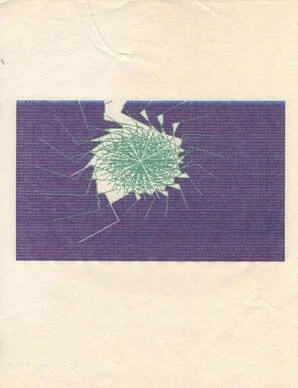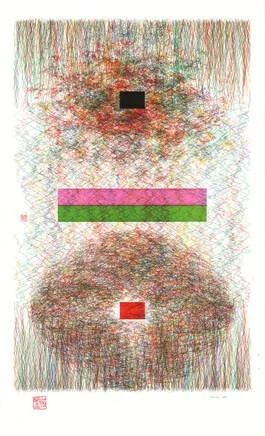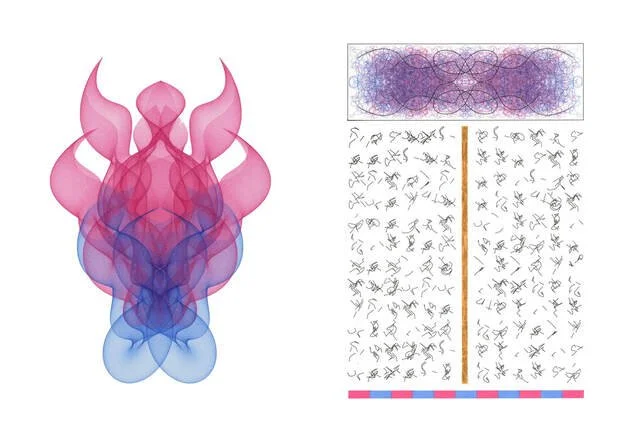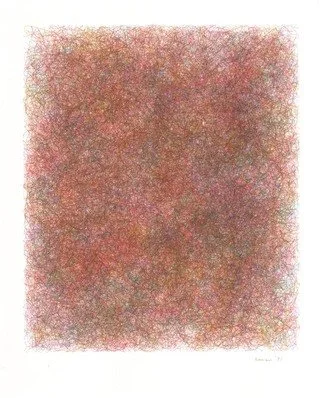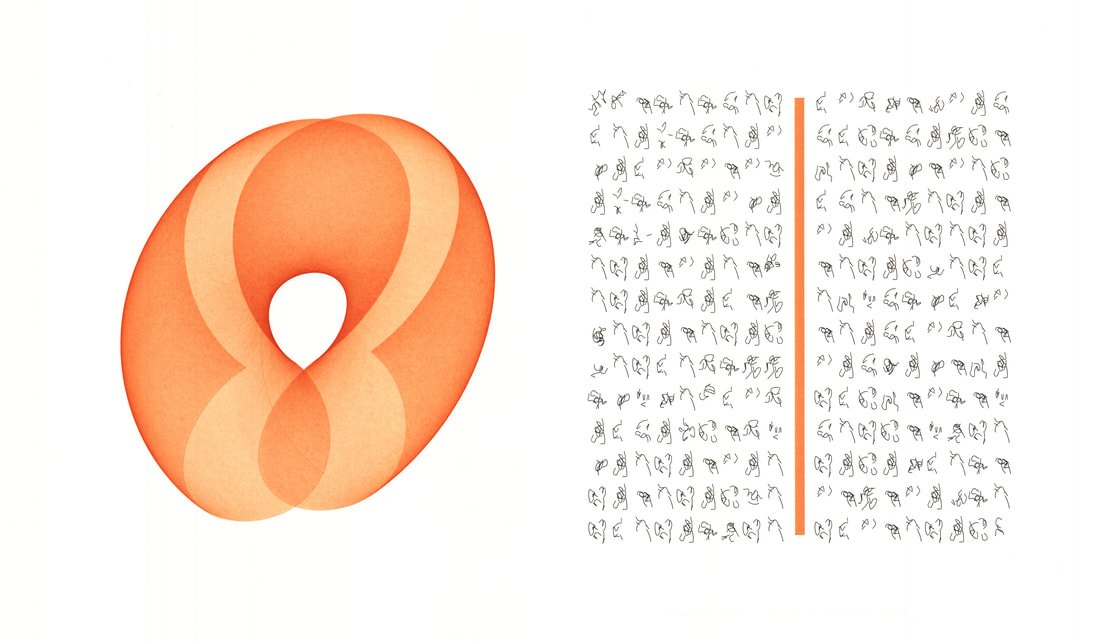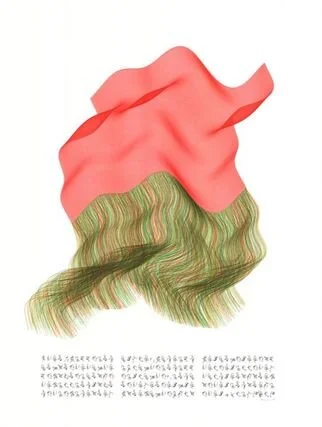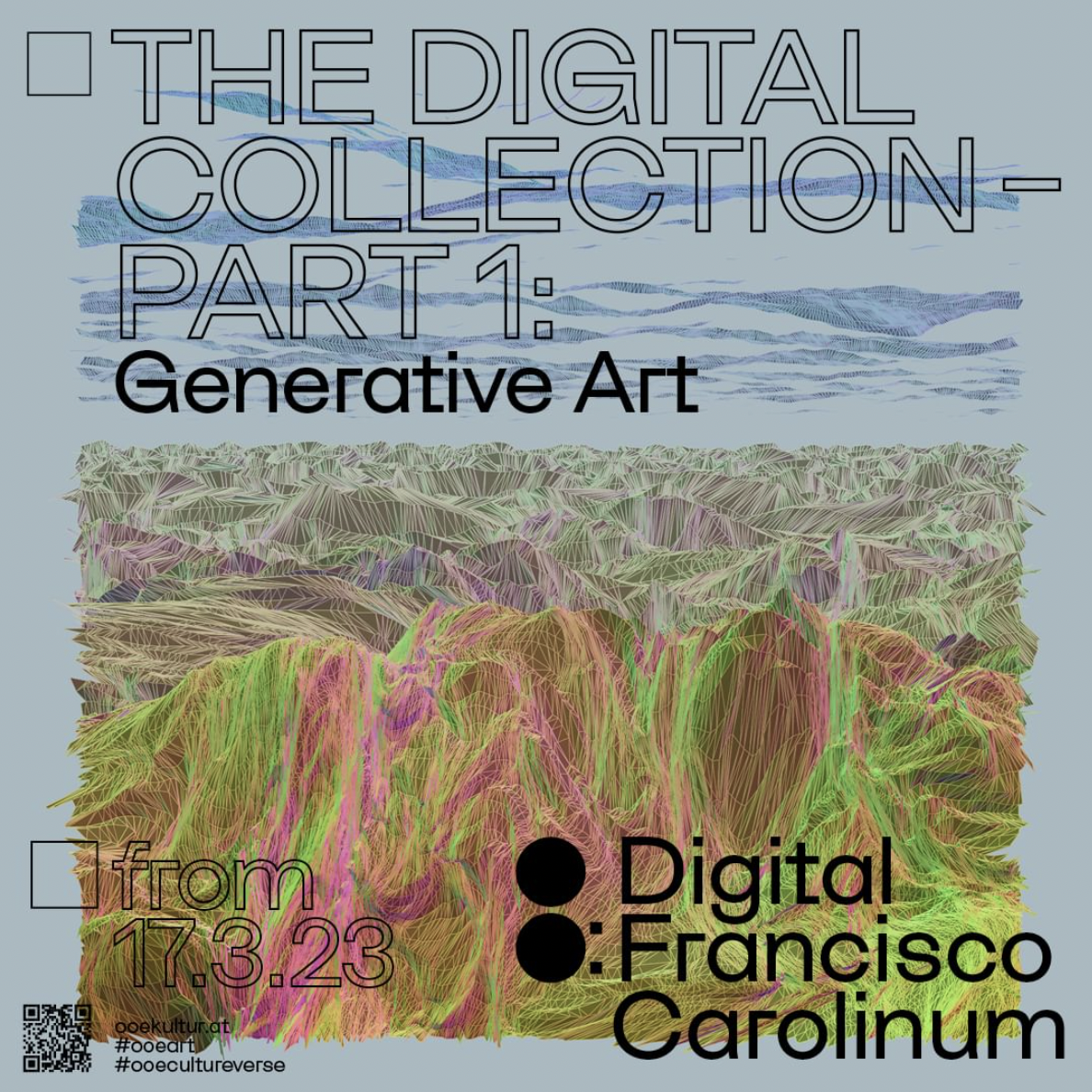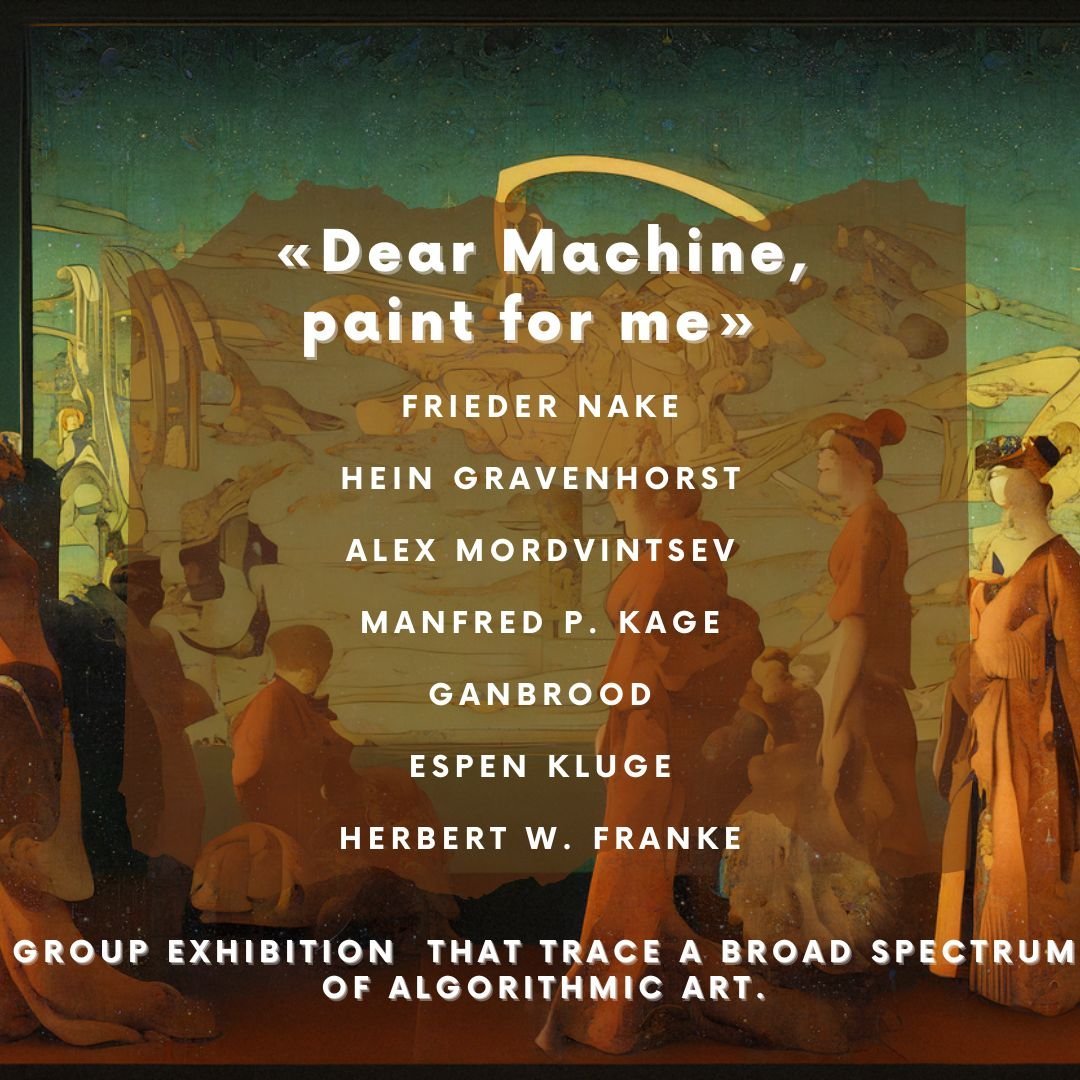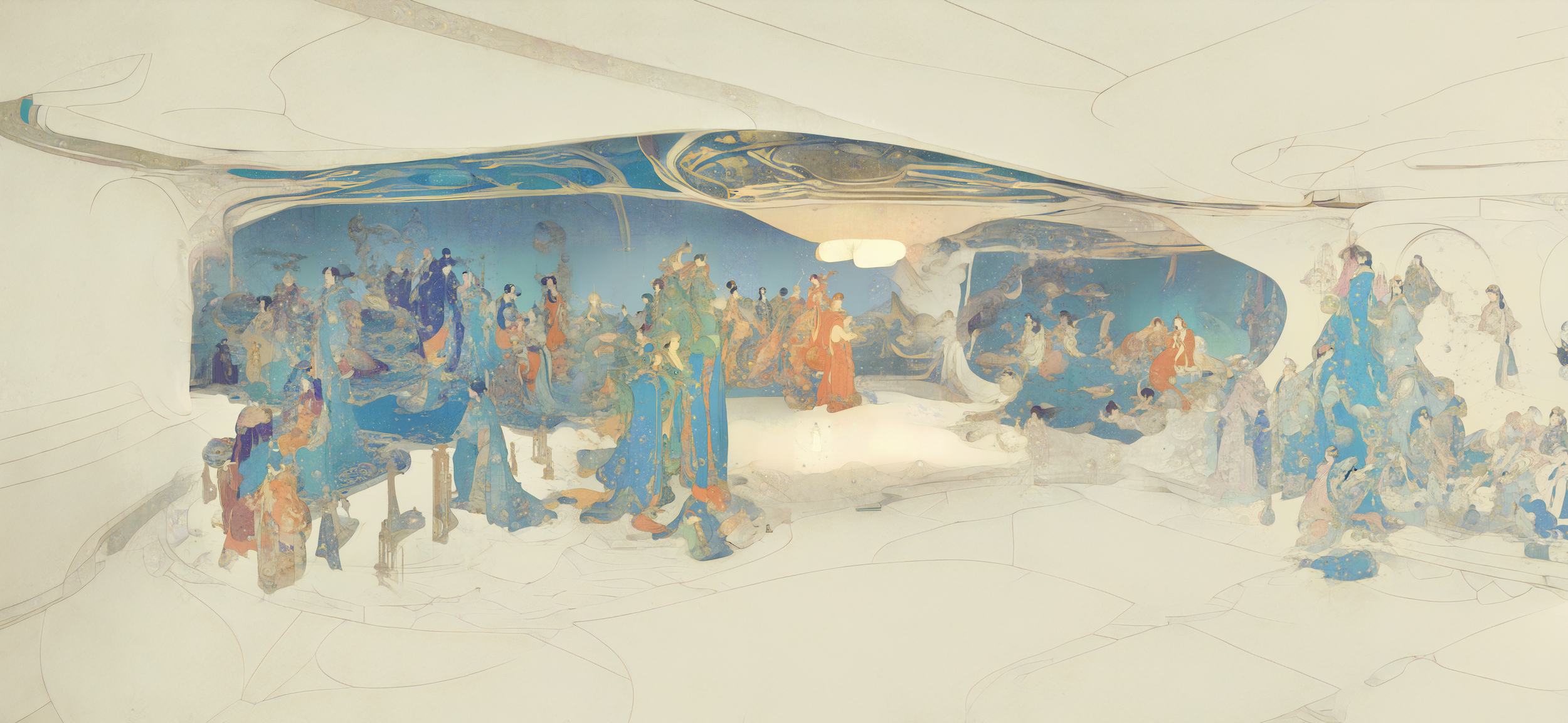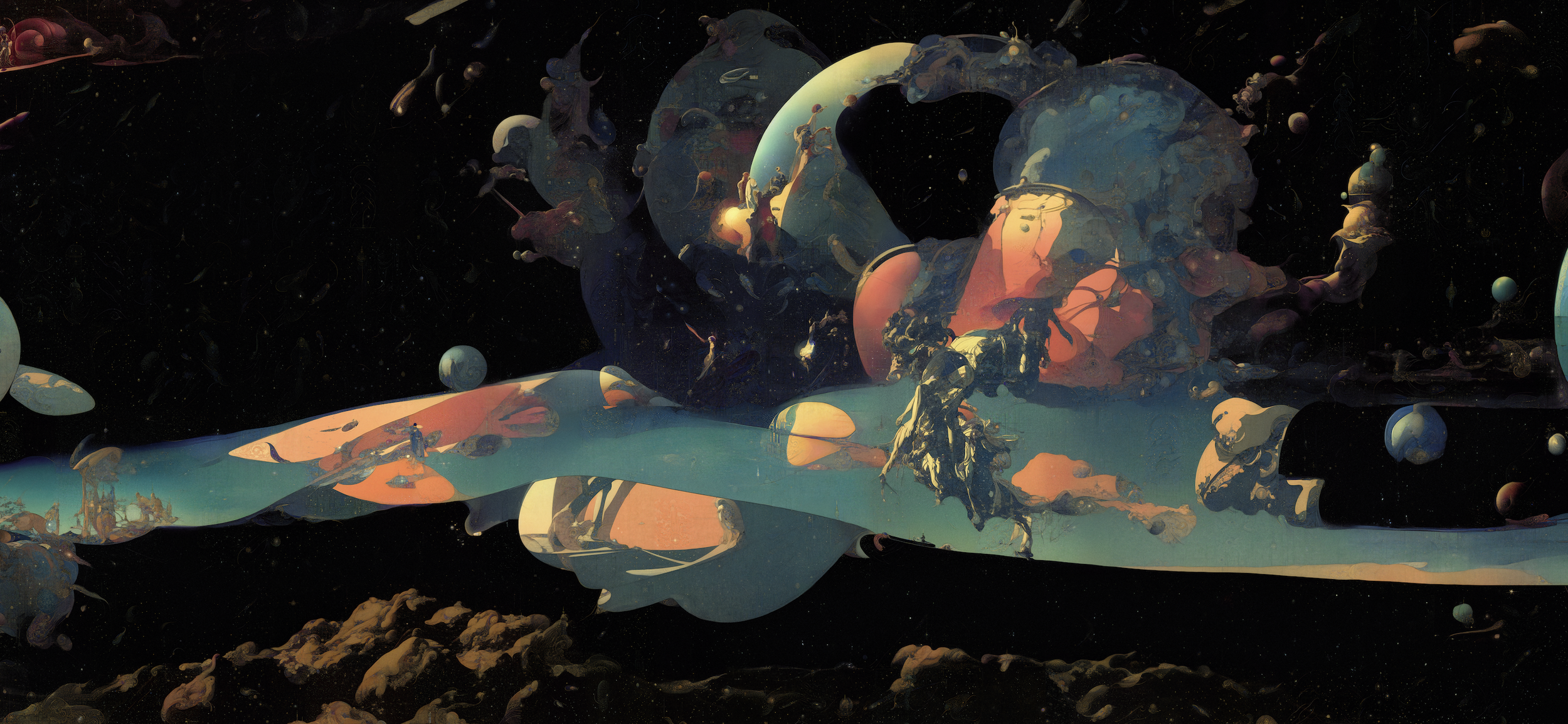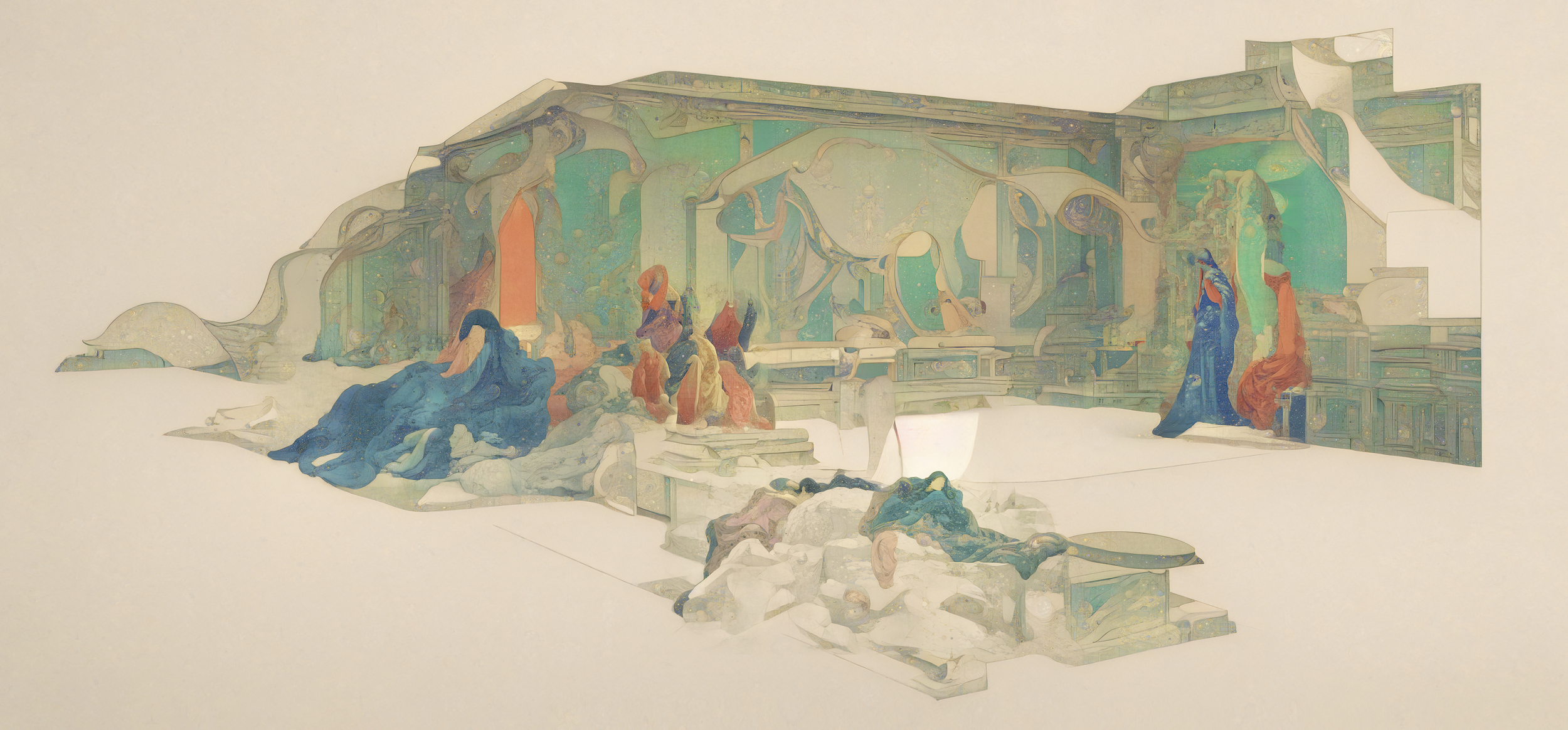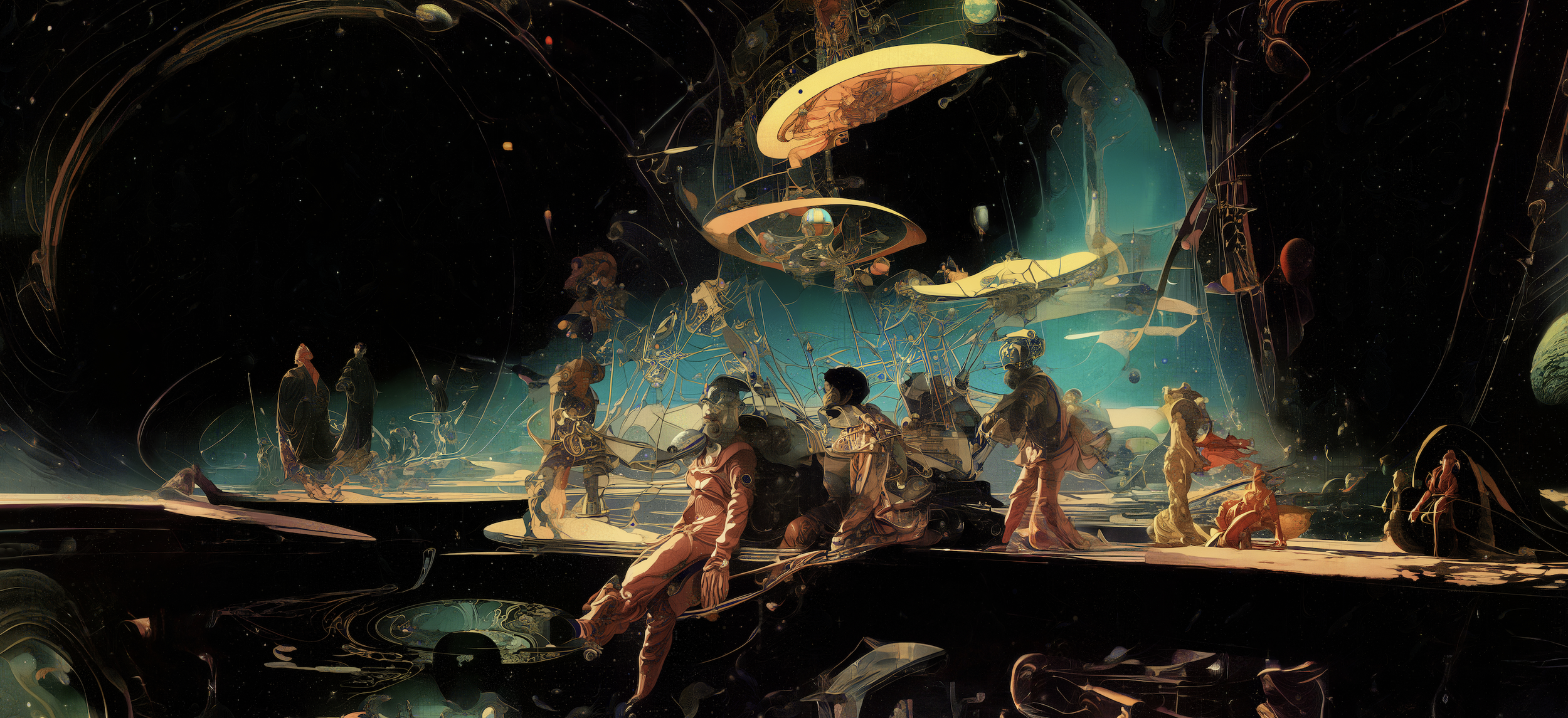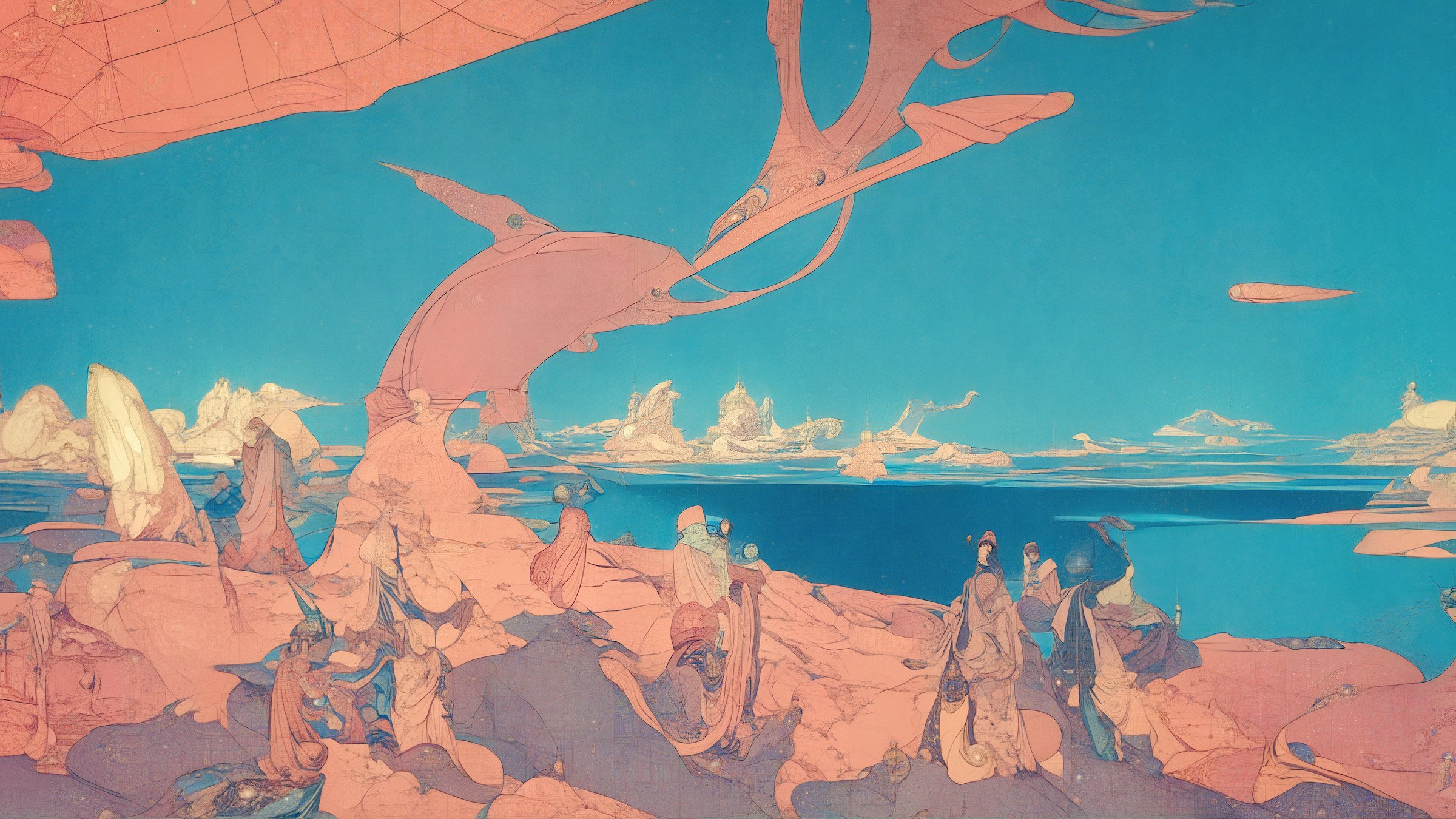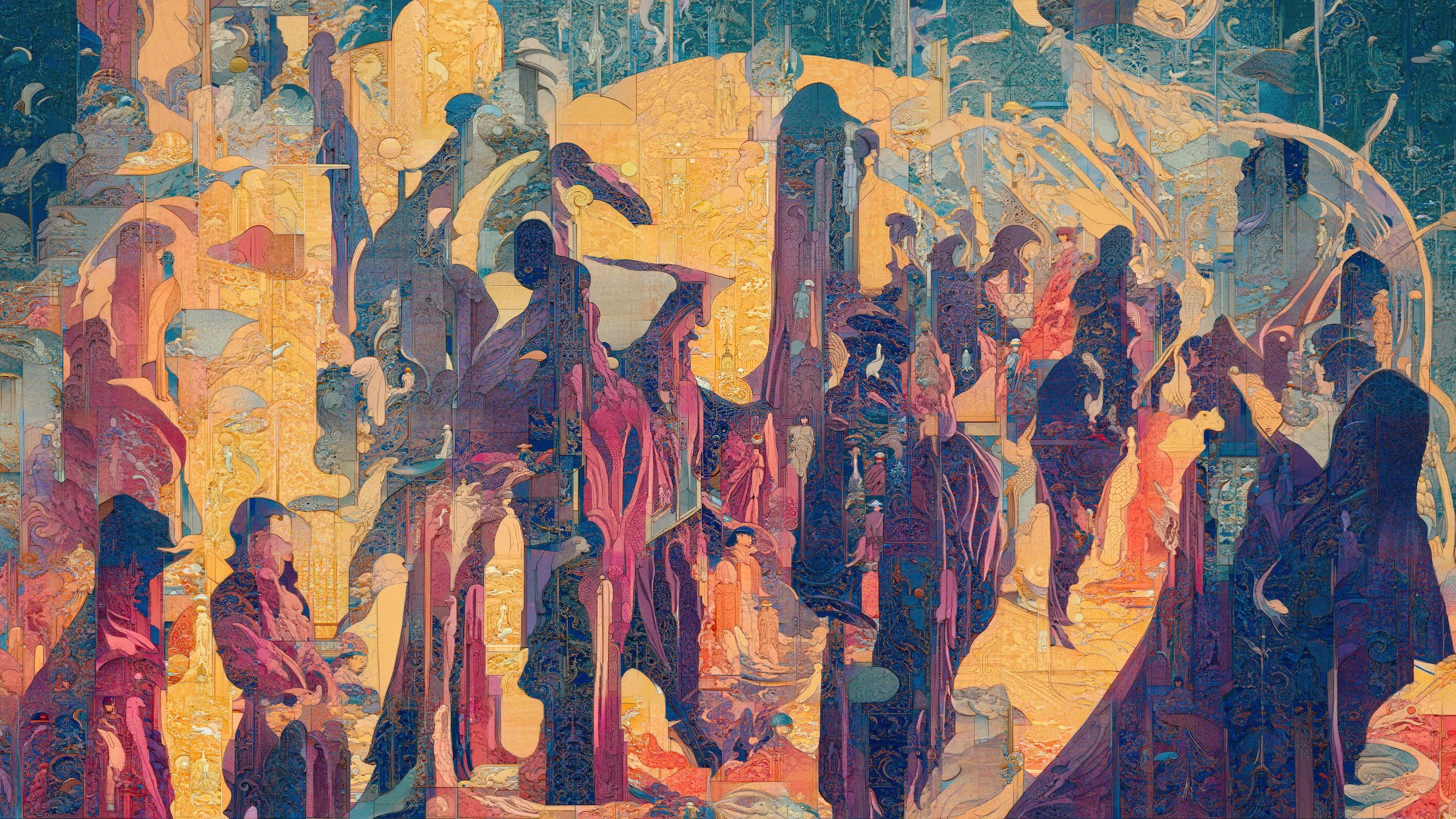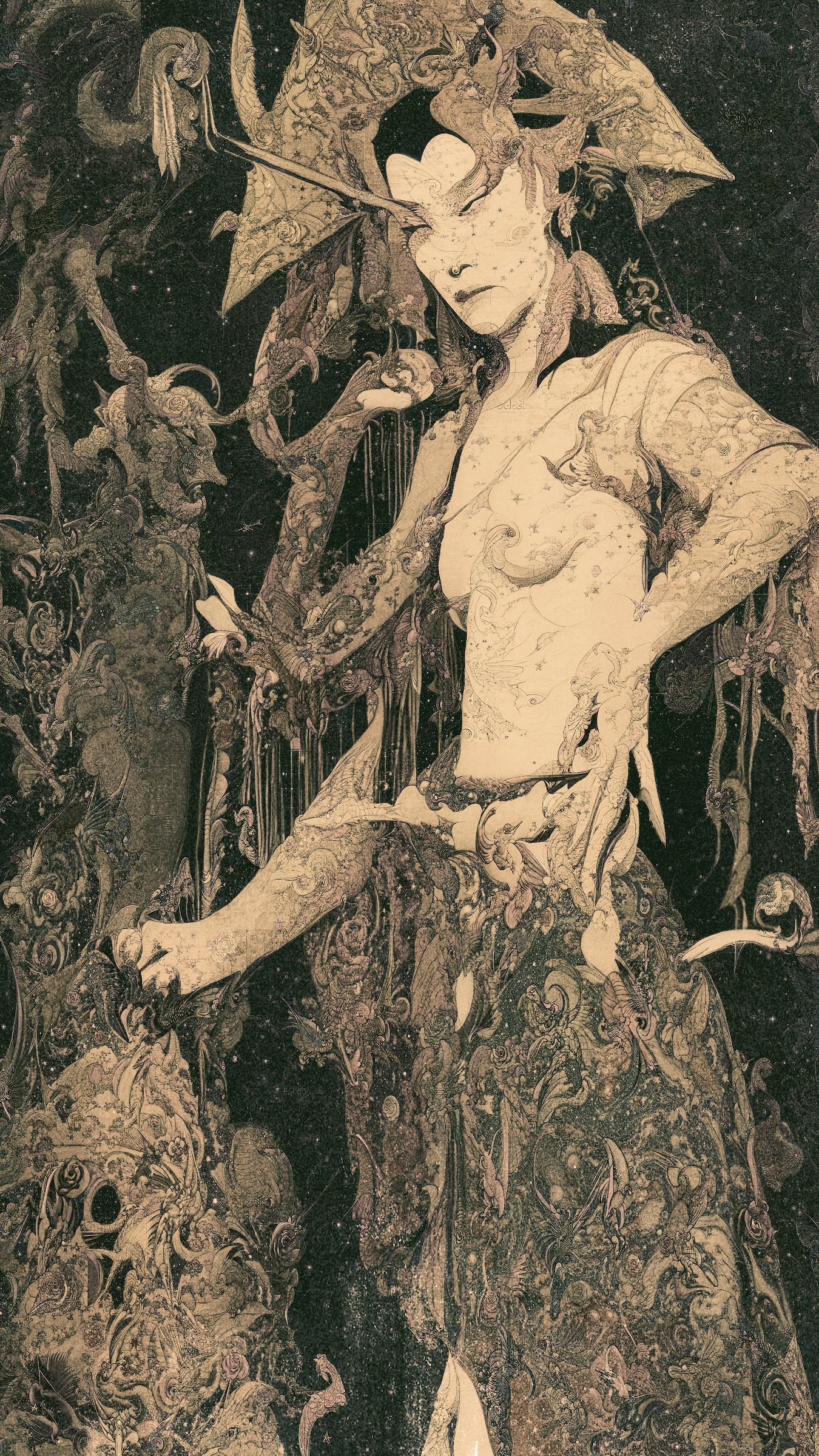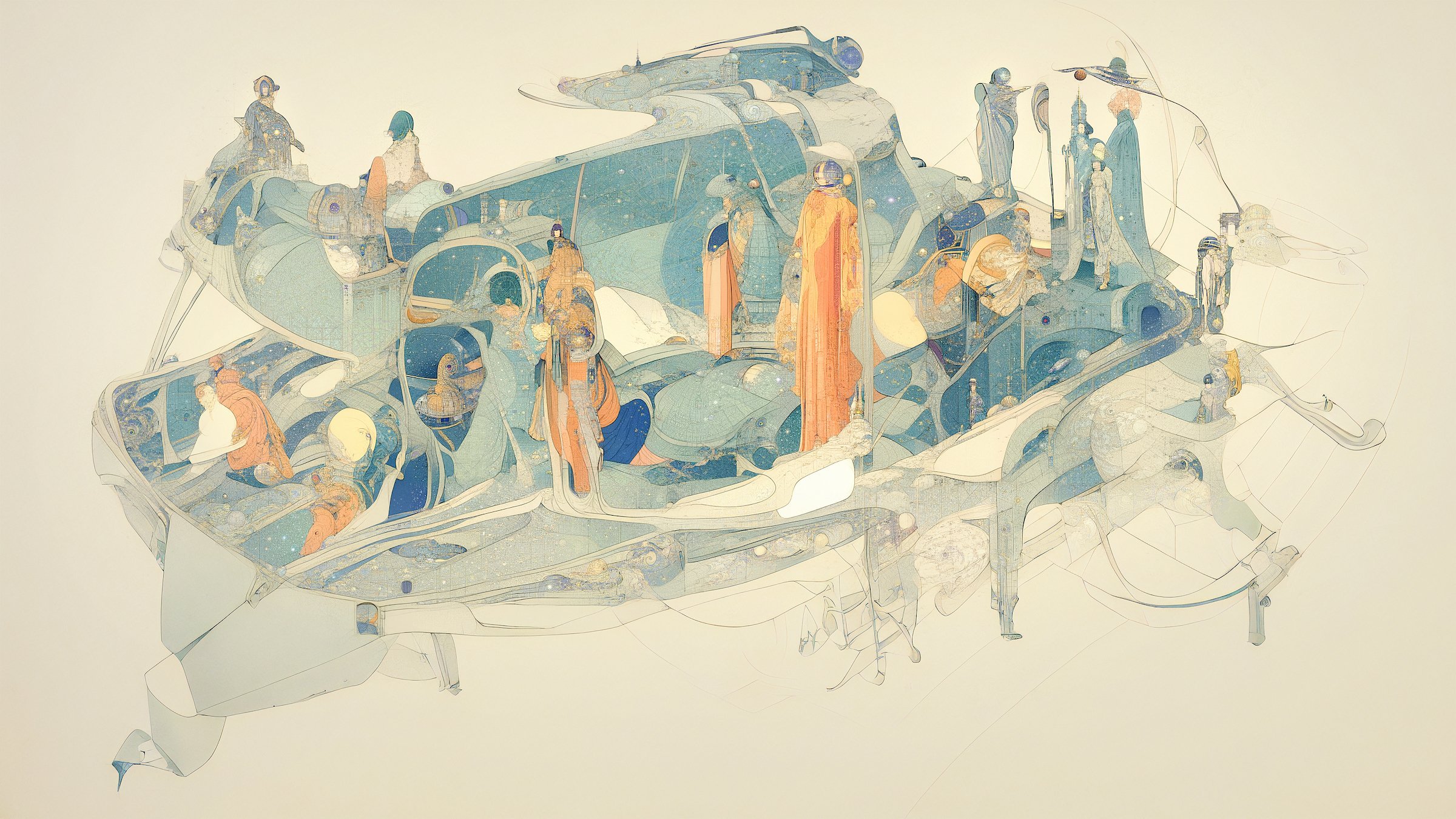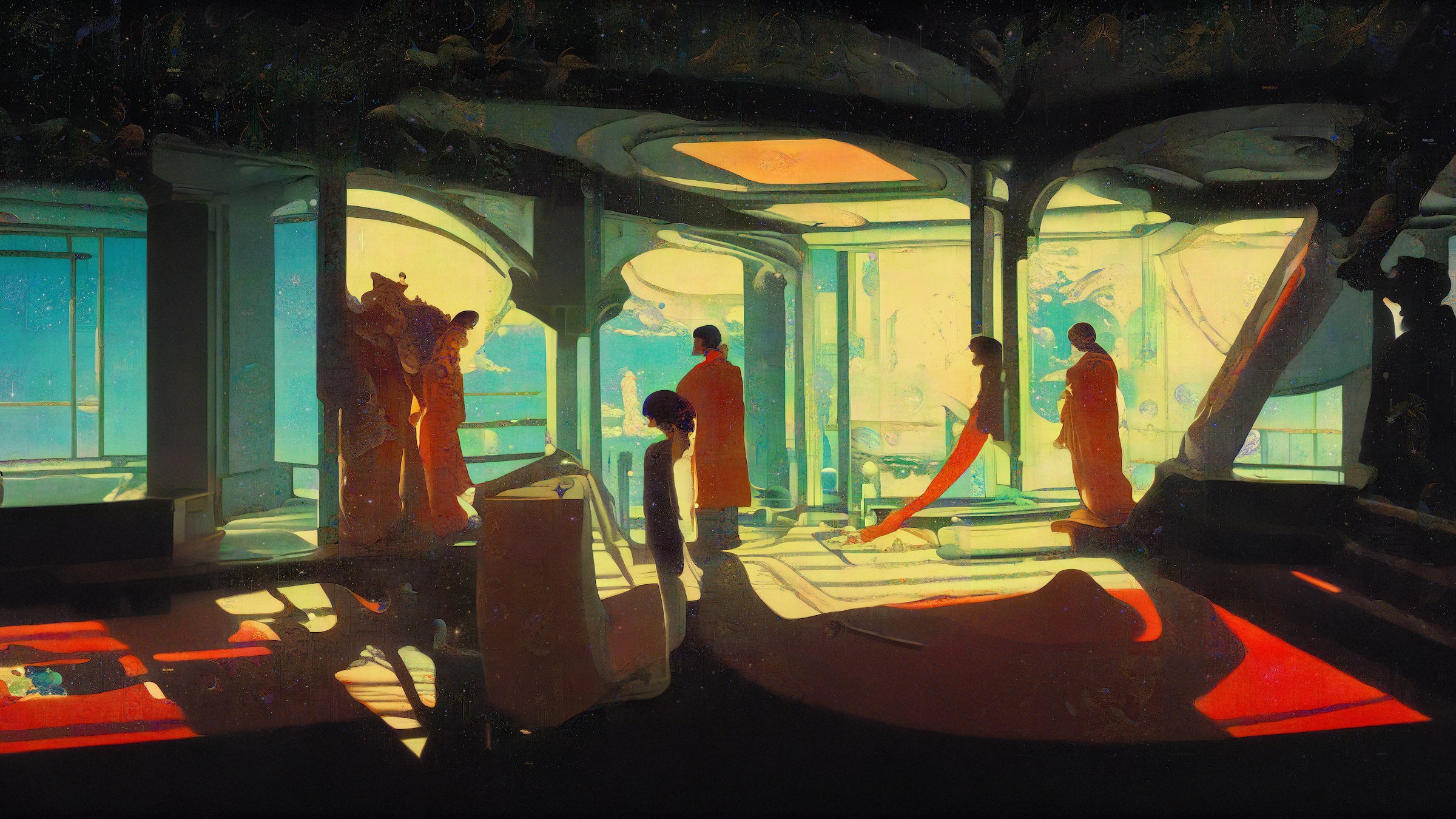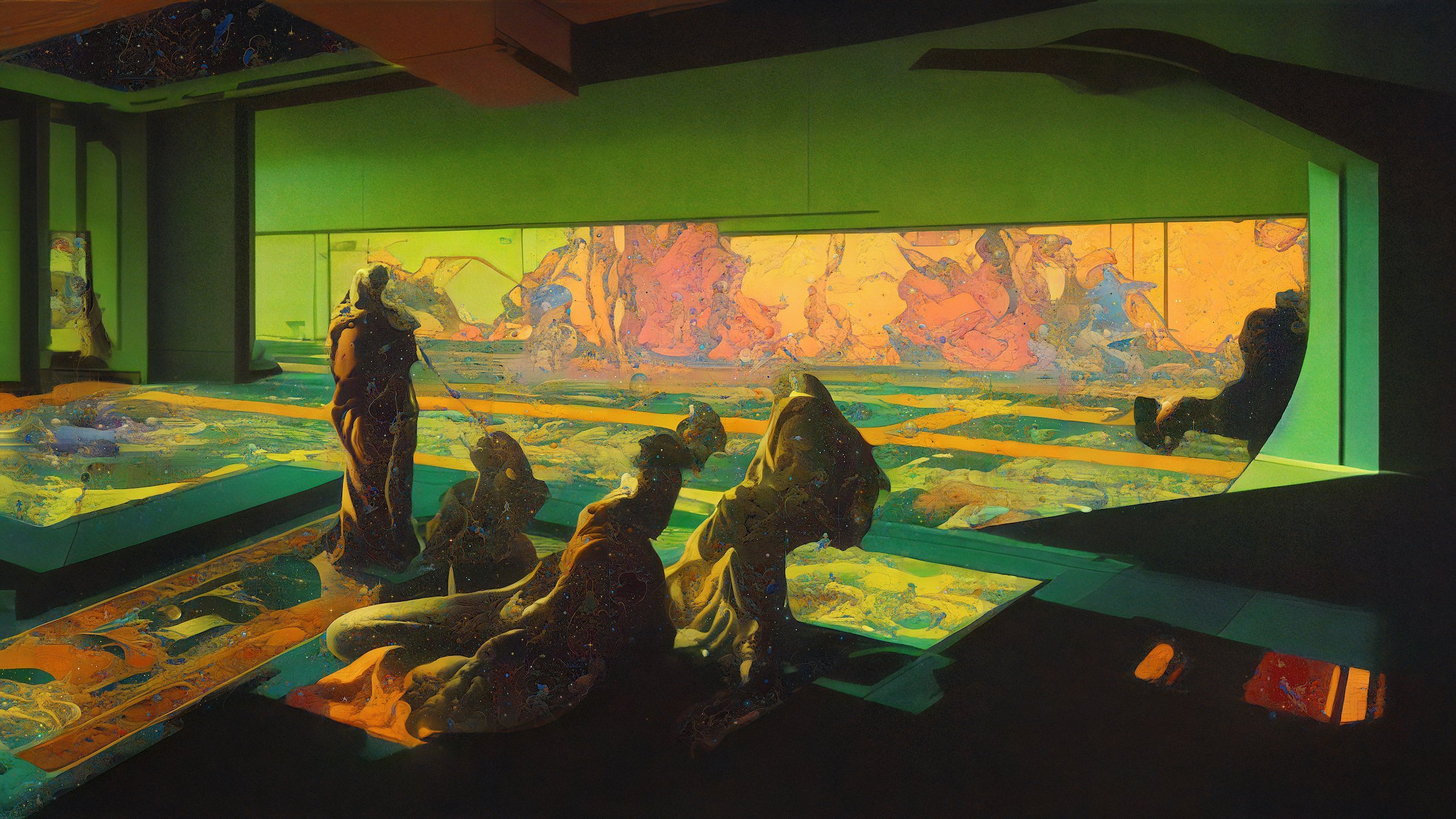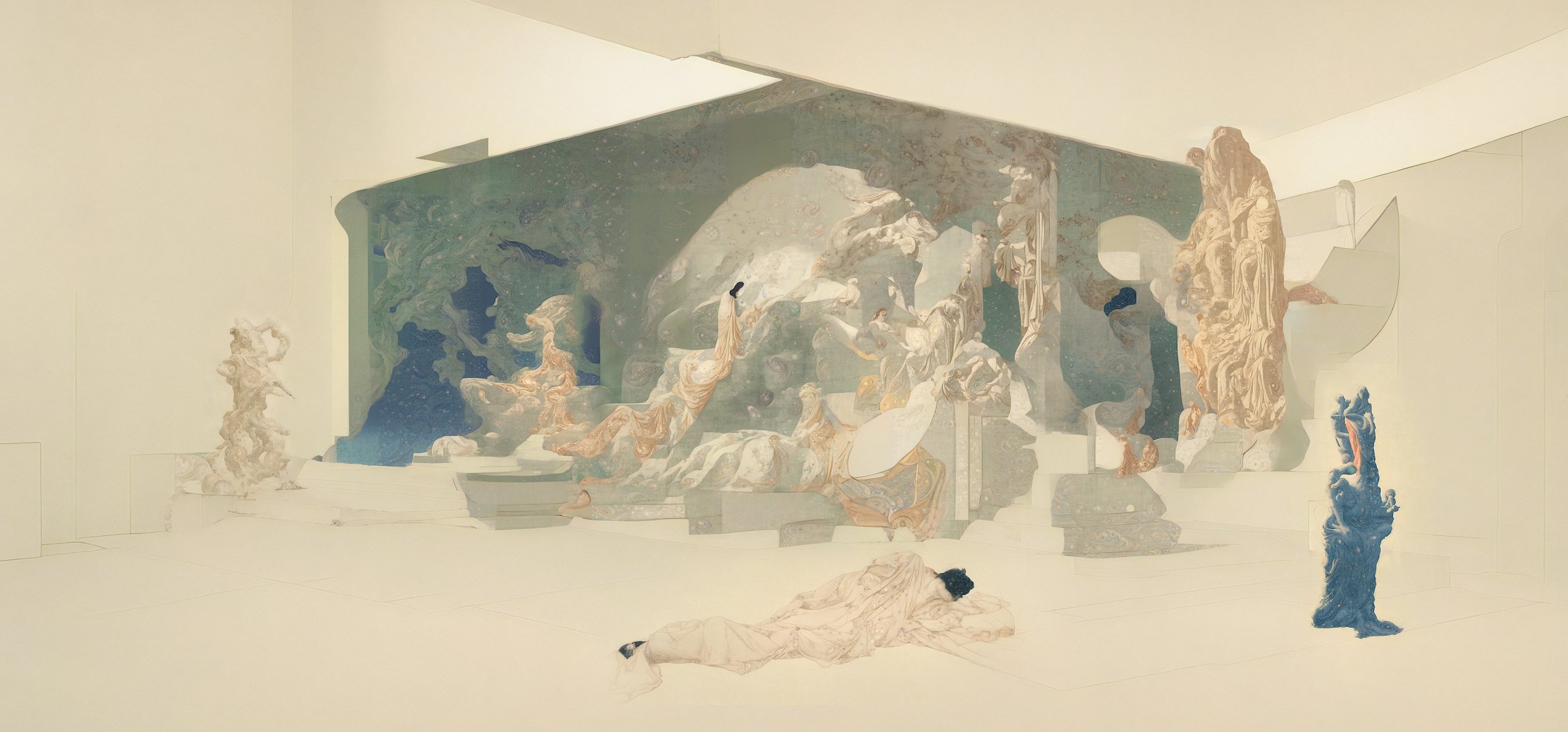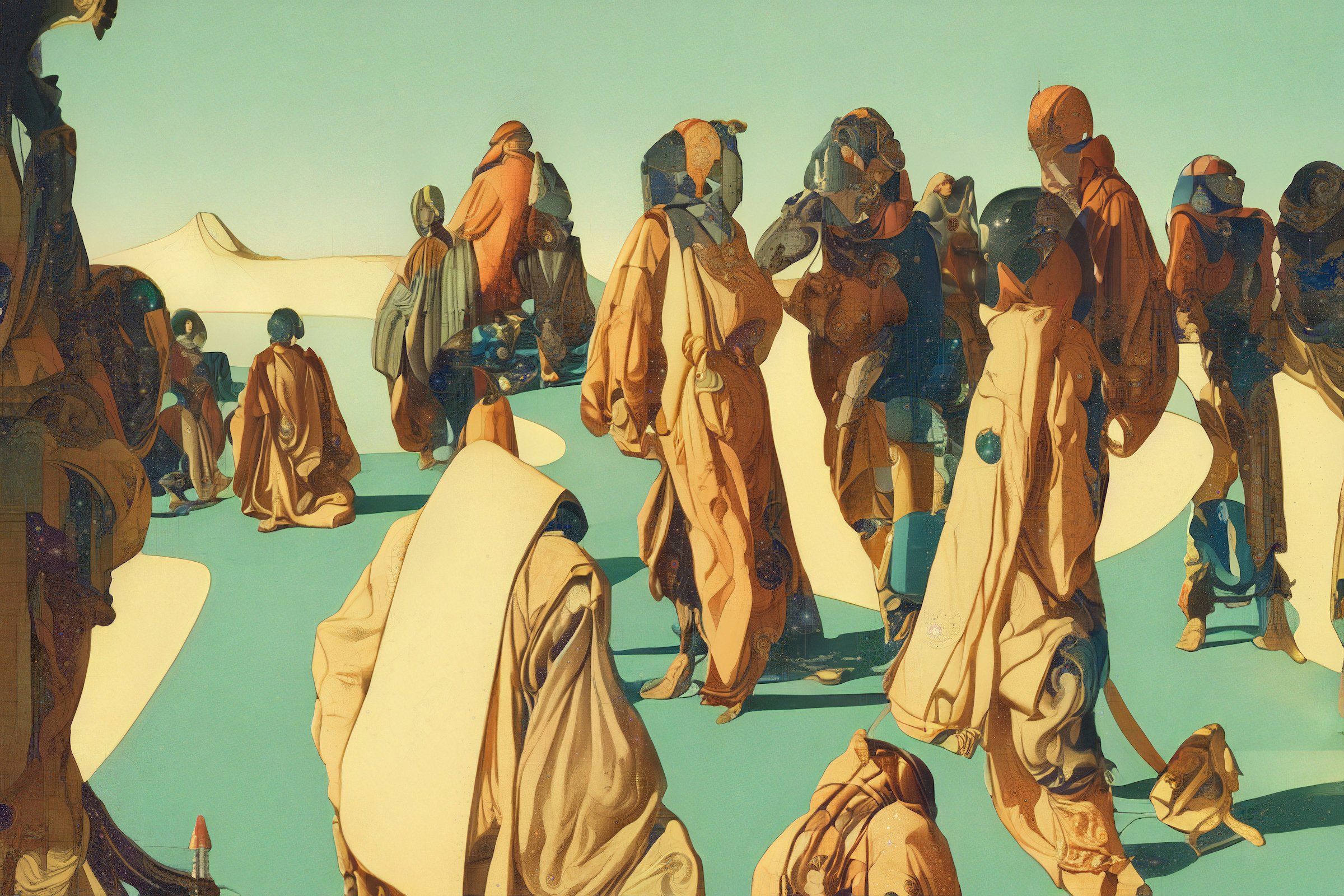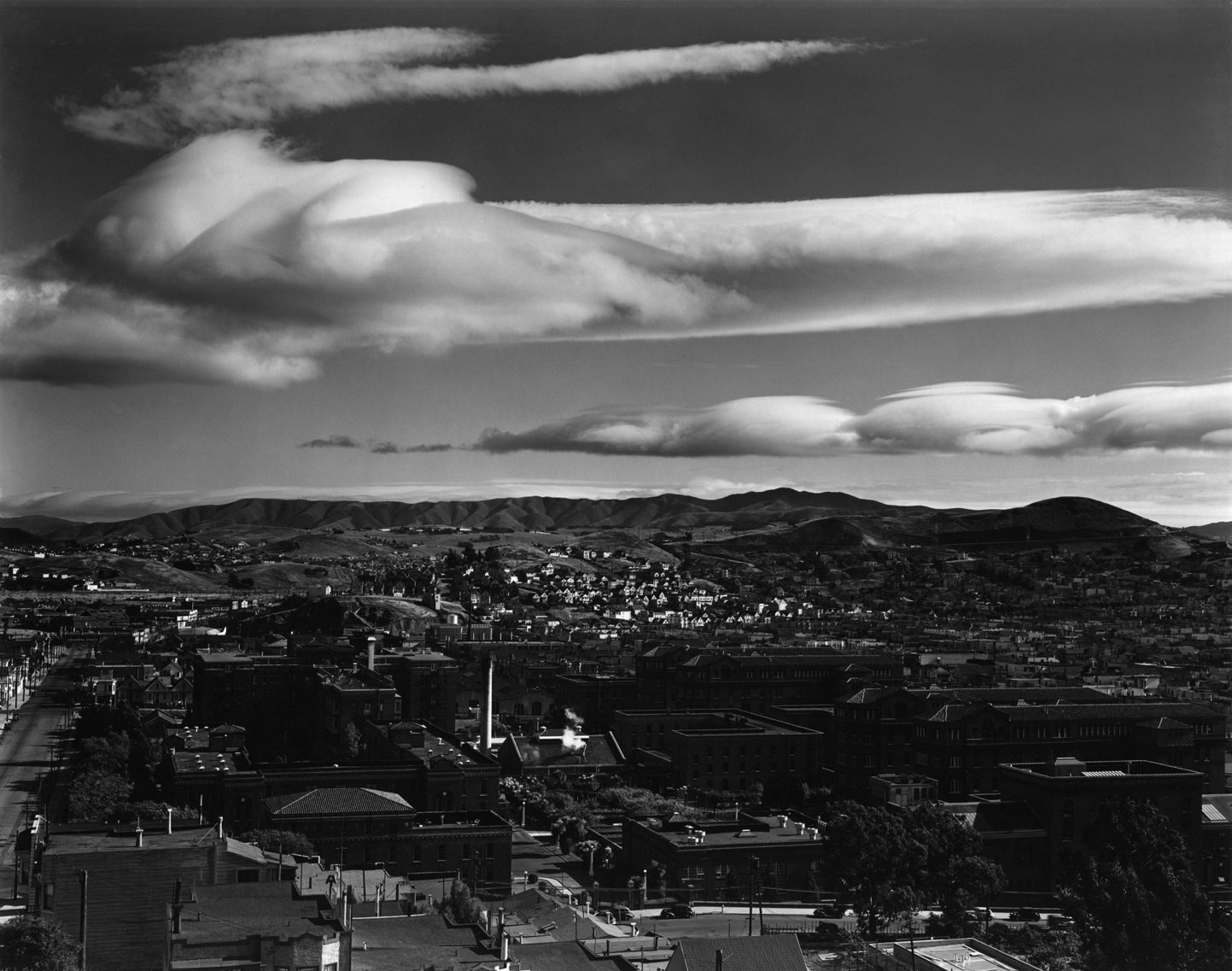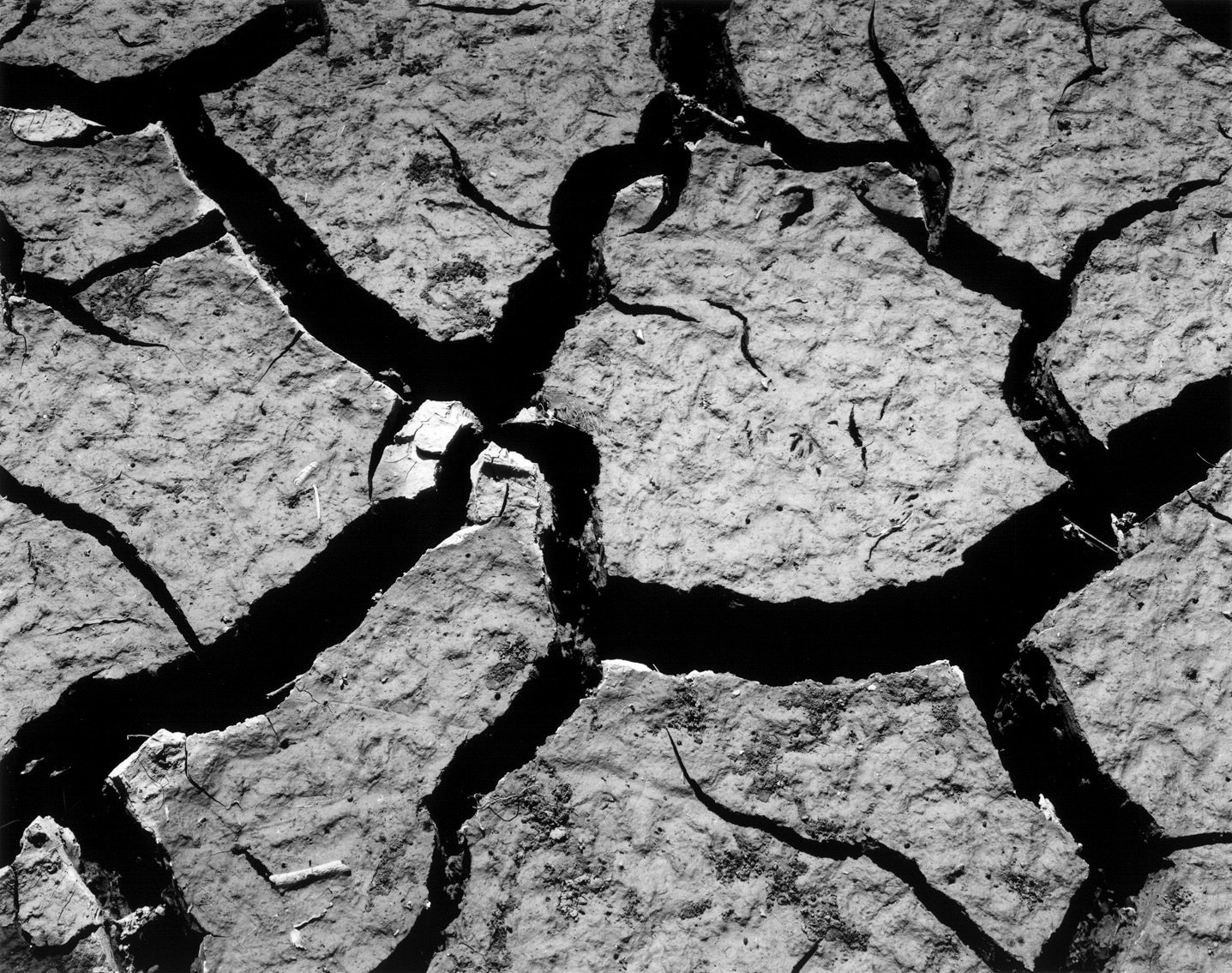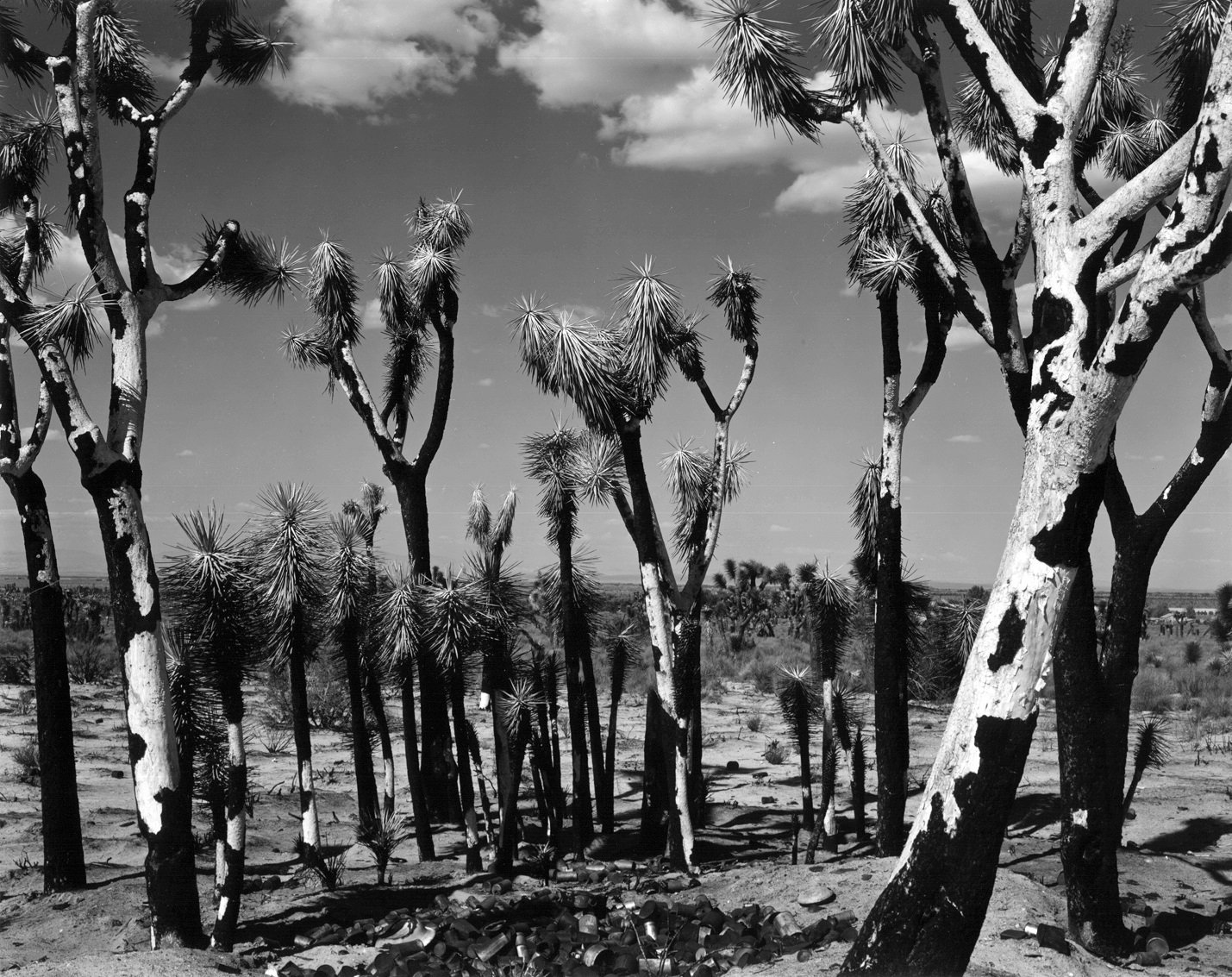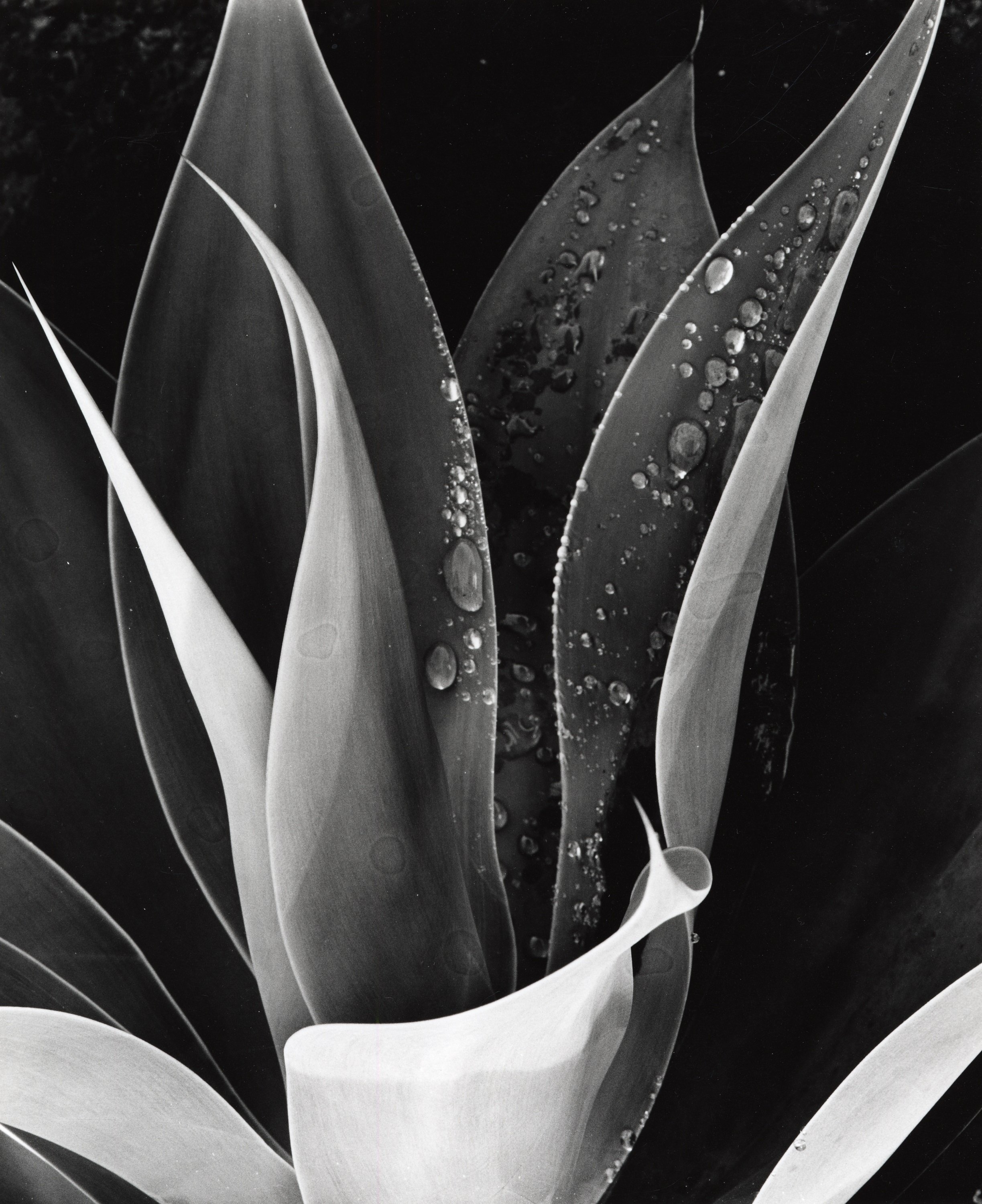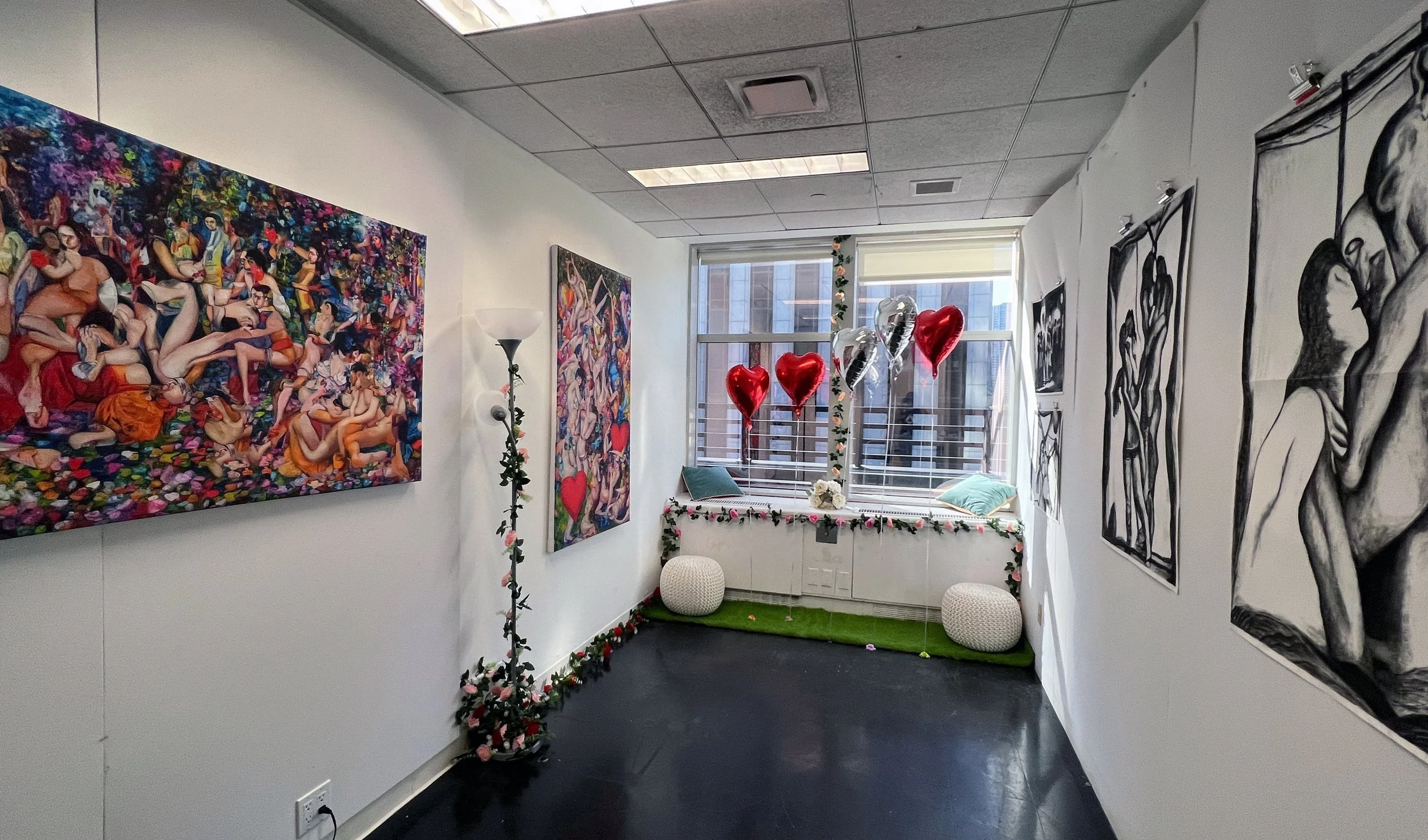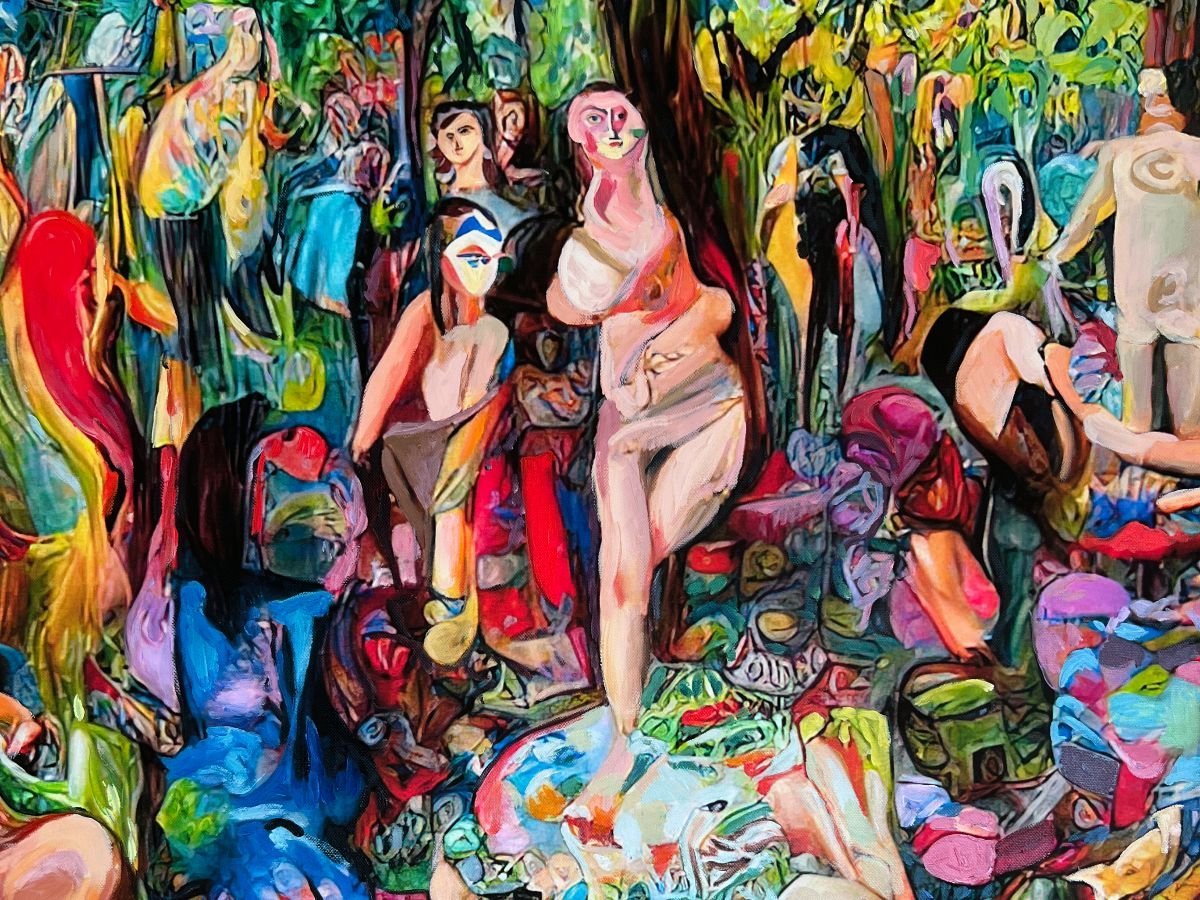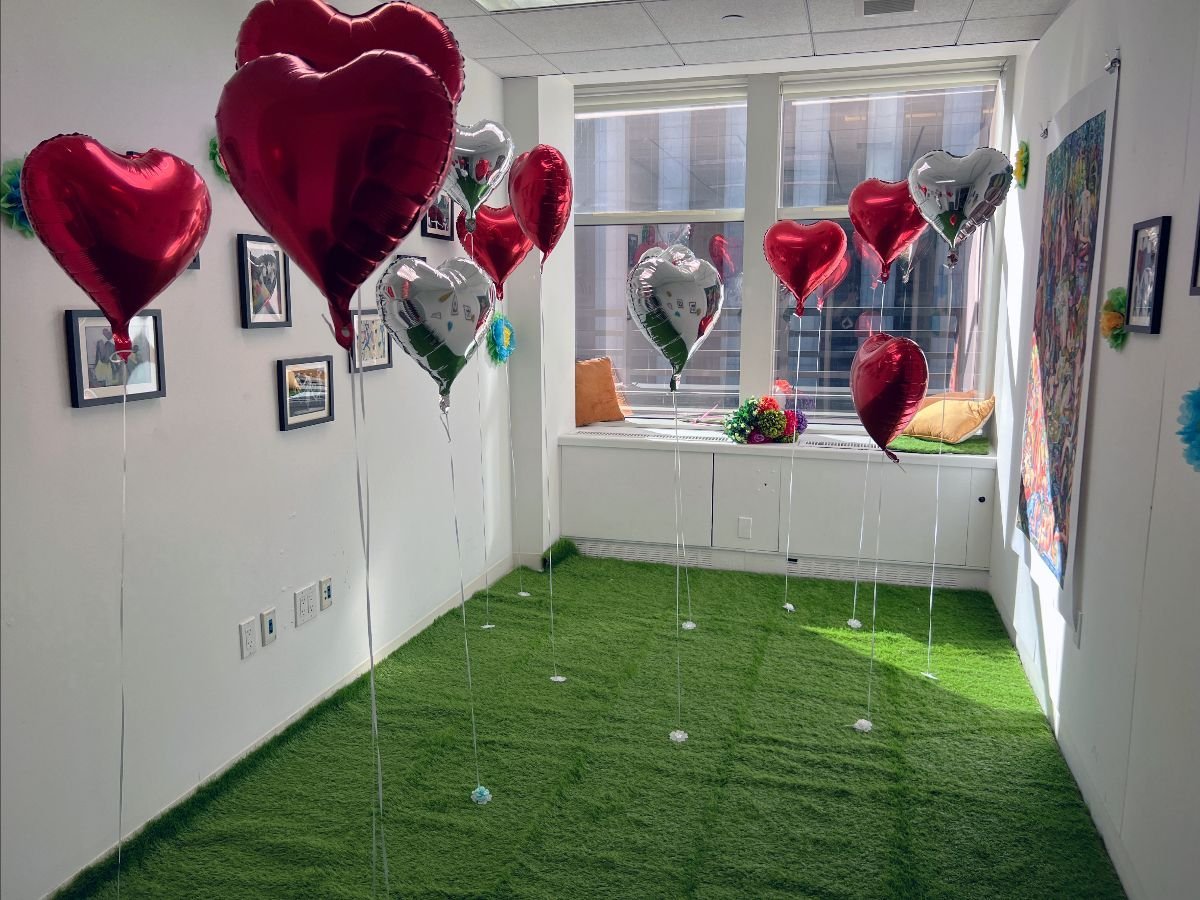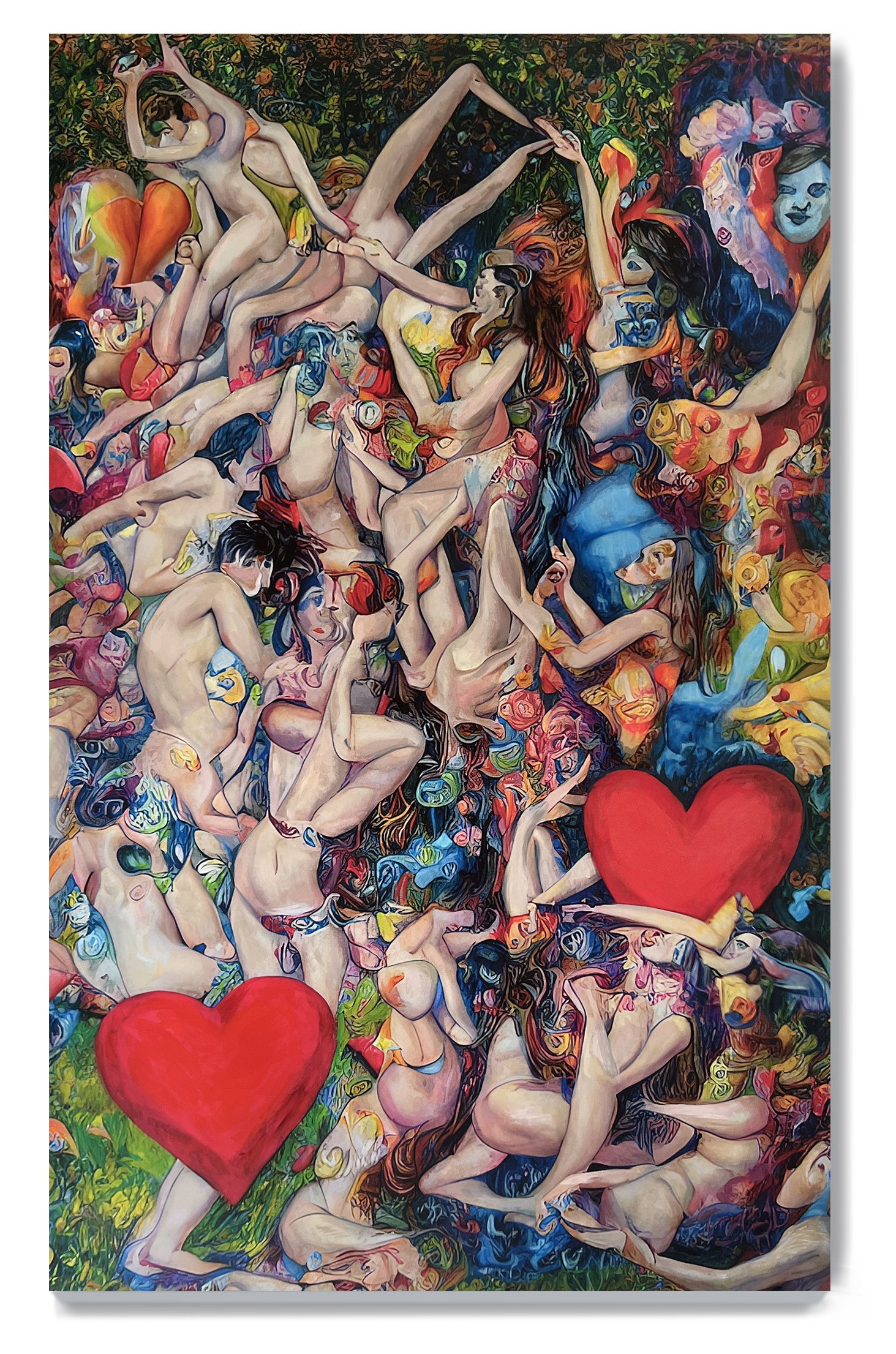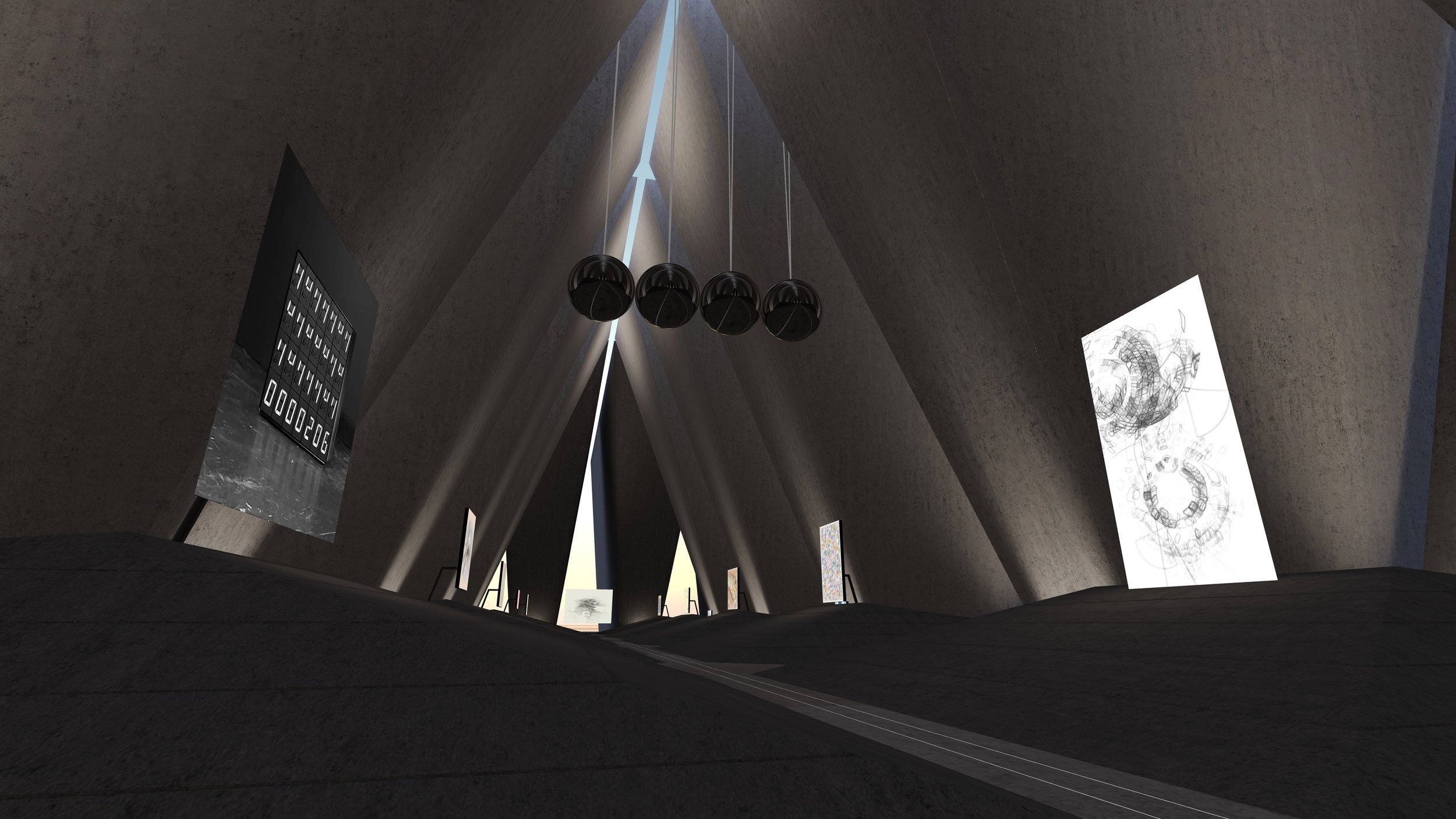“It’s Not Up To Us” by Nancy Burson at Philip K. Dick Film Festival
We are excited to announce a special screening of "It's Not Up To Us" on Saturday, April 6th, 2024, from 4pm to 6pm at The Philip K. Dick Film Festival, hosted by The Museum of the Moving Image. This short documentary explores the journey of artist Nancy Burson. Following the screening, attendees will have the opportunity to participate in a Q&A session with Nancy herself.
Legendary visual artist Nancy Burson sparked a technological revolution by using computer morphing techniques to blend art and science, however, she claims she didn’t do it alone. The complex truth behind Nancy’s beliefs and how they shaped her career has assiduously evoked questions about the nature of creation and of reality itself. “It’s Not Up To Us” stands as a testament to the boundless potential of human creativity and presents a multifaceted narrative that will undoubtedly inspire, challenge, and captivate viewers, much like Nancy’s art has done for countless decades.
Artist/inventor Nancy Burson has taught at Harvard and worked with the NSA. She firmly believes we’re not alone and has documented the evidence that she has received for the past 15 years. She sees what our government is now calling UAPs or “inter-dimensional entities” in the form of plasma physics. It is her exposure to these entities that have led her to understand that they are with each human. Thus, validating deterministic thinking while, simultaneously, hiding from physicists in the form of the missing 85% of the Universe they call “dark matter.”
She has diligently sought authentication through science, and has had her metamaterials analyzed in the US, UK, and Israel. Nancy’s path has also taken her on a journey from NASA to the secret laboratories of the NSA. She has documented her meetings with NASA in 2009 and the NSA team for which she was recruited in 2010/11. She provided these mysterious substances that “are not from here” to those agencies, and feels she’s been a pawn in the game of who in the intelligence community knows what about UFOs/UAPs.
The new agency called the “All Domain Anomaly Resolution Office” (AARO) https://www.aaro.mil/ is seeking those with evidence and information about orbs, as these have been thoroughly documented through the US military. Last year’s announcements delineating that they are real were nationally televised. When Nancy worked with the NSA, they found an unknown amino acid emitting an unknown light source, but were unwilling to reveal what they discovered. However, now feels like the right time to turn over some of her evidence to this new NASA/Pentagon agency and to the greater scientific community as well. There are some parts of the intel agencies that are already expecting her to do so, as her former NSA team have let her know she’s being watched.
For further information, contact Nancy Burson nb@nancyburson.com
DATE:
Saturday April 6th, 2024
4pm to 6pm
LOCATION:
The Museum of the Moving Image
36-01 35th Ave
Queens, NY 11106
United States
Celebrating the Launch of "On NFTs" by Taschen Book
We are thrilled to announce the launch of "On NFTs" a publication presented by TASCHEN in collaboration with Robert Alice. This book represents the first major, full-scale art historical study on NFTs, marking a pivotal moment in the exploration of digital art and its impact on the art world. To celebrate this monumental release, TASCHEN organizes a series of events and exclusive offers, starting with an official preview at the TASCHEN flagship store in Paris.
Official Launch Preview
Join us on February 22nd at 6:30 PM CET for a party at the TASCHEN flagship store in Paris. This event provides an opportunity to view the book "On NFTs" for the first time and to join a gathering of art and NFT enthusiasts.
Location: TASCHEN Store Paris, 2 Rue de Buci
Time: February 22, 2024, 06:30 PM - 08:30 PM
RESERVE YOUR SPOT HERE!
All Contributor Twitter Spaces
To further celebrate the launch of "On NFTs", many contributors will join for a Twitter Space on February 23rd at 6 PM CET. This digital gathering will be an opportunity to discuss the book, share insights, and celebrate the launch together.
Location: Twitter Space
Time: February 23rd at 6 PM CET
We look forward to celebrating and exploring the dynamic and ever-evolving landscape of NFTs through this publication.
À LA RECHERCHE DE VERA MOLNAR – Exhibition of Vera molnár in Ludwig Museum, Budapest
We're excited to share that the Ludwig Museum is organizing a special exhibition showcasing the work of Vera Molnár, one of the pioneers of generative art. This comprehensive exhibition of her oeuvre will be held in her hometown, Budapest, opening on the 10th of February and running until the 14th of April, 2024. Apart from Vera Molnár's artworks, the exhibit will also showcase pieces from internationally acclaimed artists who were influenced by this pioneer. We're proud to share that among the artists exhibiting, several are also represented by our gallery, including Mario Klingemann and Iskra Velitchkova.
The exhibition of ‘À la recherche de Vera Molnar’ at Ludwig Museum, Budapest © Photo: Kate Vass Galerie
The Ludwig Museum’s exhibition titled À la recherche de Vera Molnar pays tribute to the artistic legacy of Vera Molnar, who passed away shortly before her 100th birthday. Born in Hungary and educated at the Hungarian Academy of Fine Arts, Molnar lived and created in France from 1947 until her death. From 1968, she was among the first to create artworks using a real computer, and she is still widely regarded as one of the most significant pioneers of computer art.
The exhibition’s title refers to Vera Molnar’s series À la recherche de Paul Klee, recalling the artist’s experiments in examining art historical influences through her own creative methods and tools. Similar to the narrator of Marcel Proust’s novel sequence À la recherche du temps perdu (In Search of Lost Time), Molnar was interested not only in the mere recall of the past but also in its reinterpretation in the context of the present.
The exhibition of ‘À la recherche de Vera Molnar’ at Ludwig Museum, Budapest. © Photo: Kate Vass Galerie
Following this spirit, the two-part exhibition at the Ludwig Museum provides an overview of pivotal chapters in Vera Molnar’s career. Displaying unique and reproduced graphic series and paintings, the exhibition spans from the late 1960s to the present day, presenting the most significant themes and art groups of this unique body of work, tracing the transformations in Molnar’s line and form systems.
Vera Molnar’s works are based on programmed algorithms, constructed from basic geometrical forms. In the beginning, she experimented with quite simple algorithms. Her series works arise from small variations of the basic elements, adding what the artist calls “1% disorder.” Discovery and randomness played a significant role in her working method. For Molnar, the randomness generated by the computer revealed the horizon of possibilities, but the decision and choice always remained in the hands of the artist. Balancing on the border between order and disorder, her compositions combine the geometric formal language with playfulness and a personal, unique sensitivity.
The other part of the exhibition introduces, for the first time worldwide, a special international group exhibition featuring works and unique reflections by invited internationally acknowledged artists. This section pays homage to Molnar’s legacy, and examines her impact on contemporary art.
The exhibition is realized through the collaboration of the Ludwig Museum, the Foundation of Art and Culture (Stiftung für Kunst und Kultur), and the Vintage Gallery.
Exhibiting Artists: Refik ANADOL, Arno BECK, Snow Yunxue FU, Mario KLINGEMANN, Patrick LICHTY, Frieder NAKE, Casey REAS, Antoine SCHMITT, Erwin STELLER, Tamiko THIEL and /p, u2p050, Iskra VELITCHKOVA, aurèce vettier, Mark WILSON, Samuel YAN
The exhibition of ‘À la recherche de Vera Molnar’ at Ludwig Museum, Budapest. © Photo: Kate Vass Galerie
LOCATION:
Ludwig Museum
Komor Marcell u. 1
1095, Budapest.
Hungary
TIME:
10. February, 2024 – 14. April
VISIT THE WEBSITE:
https://www.ludwigmuseum.hu/en/exhibition/la-recherche-de-vera-molnar-artworks-vera-molnar-and-homages-internationally-acclaimed
Works by Iskra VELITCHKOVA and aurèce vettier at the exhibition, À la recherche de Vera Molnar’ at Ludwig Museum, Budapest. © Photo: Kate Vass Galerie
VERA MOLNÁR
Born in Hungary in 1924, Vera Molnar is one of the first women artists to use computers in her practice. Molnár completed her art studies in her hometown before moving to Paris. Her early artistic endeavors focused on traditional mediums, particularly abstract painting, where she demonstrated a keen interest in geometric forms and systematic art. A key milestone in Molnár's career was co-founding the "Groupe de recherche d’art visuel" (GRAV), an influential collective dedicated to exploring visual arts through research and collaboration. The group, active in the 1960s, was instrumental in investigating new artistic expressions and contributed significantly to the development of kinetic and op art.
In the late 1960s, Molnár embraced the world of digital technology, learning early programming languages such as Fortran and Basic. This marked the beginning of her groundbreaking work in computer-generated drawings, using a plotter to bring her digital creations to life. Her work often involved algorithmic procedures to generate geometric shapes and patterns, highlighting the delicate balance between order and chaos.
One of her key contributions to the field was the development of the "1% deviation" theory. This concept explores the idea that a minimal change of just 1% can dramatically alter the aesthetic qualities of a piece, challenging the boundaries between rule-based systems and artistic intuition.
Throughout her career, Molnár remained at the forefront of the computer art movement, establishing it as a legitimate artistic discipline. Her works are celebrated for their mathematical precision, aesthetic simplicity, and innovative use of technology.
In 2019 Kate Vass Galerie exhibited one of her works, Java von 12 Quadraten, 1974 by Vera Molnàr (Plotterzeichnung, 60 x 42 cm , Unique). The piece was part of the extensive group show Automat und Mensch. The exhibition was, above all, an opportunity to put important work by generative artists spanning the last 70 years into context by showing it in a single location.
INTERVIEW with JARED S. TARBELL by right click save
The iconic creator shares how generative art can unite computation and spirituality with Kate Vass and Alex Estorick
Read the full Interview on RightClickSave.com
Published by www.rightclicksave.com on the 11th of January, 2024
Jared S. Tarbell has been a leading generative artist for 25 years. In the early 2000s, he used an early version of Processing to develop digital works that reconciled nature with mathematics while achieving a balance of simplicity and complexity. He also co-founded Etsy.
Today, the creative principles that originally drove his practice have become fundamental to the movement of generative art that has mushroomed following the rise of NFTs. Recently, he collaborated with Kate Vass Galerie on “Node to Node,” introducing a new series of generative morphologies that seem to reorder the cosmos through elegant code. Here, he reflects on his career so far and shares his excitement about the new age of long-form generative art with Kate Vass and Alex Estorick.
Kate Vass: Jared, what does art mean to you and how do you think your background in mathematics and computer science influences your perspective?
Jared S. Tarbell: For the longest time, I hesitated to call what I did “art.” I thought of writing code and seeing what I could create with it as more of an academic exercise. Now that I’m older, I’ve realized how powerful art can be and how it can change a person’s life in subtle ways.
Art is a means of exploring space, asking questions about the nature of reality, how code and logic fit into all that, and the aesthetics and beauty that we can create. Art is all I want to do these days — creating and sharing it is a source of joy. I’ve never been a very good mathematician or programmer, but I’ve done it long enough that it’s a language that I can speak fluently, especially with Processing thanks to its durability. Not much has changed, [but] I used to sit down with a reference manual and have to look something up every three or four minutes. Now it just flows out of me.
KV: In a 2020 interview, Jason Bailey described you as seeking harmony in your work between the seemingly oppositional forces of the spiritual and the rational. How do you relate to this description, and is it still relevant or even more relevant than before?
JST: There is some reconciliation between computation and spirituality. I view computation as a spaceship to explore these spaces, realities, and spirituality. We’re asking ourselves these questions: what is our purpose? What is the nature of reality? What is consciousness? All of which raise really big ideas about our relationship to other people, other life forms, and the earth. The way I like to explore such ideas is through the fundamental truths of mathematics, geometry, and code. It seems I’m never going to get the answer, but it is a way of gaining perspective and insight.
All artworks from the ‘Node to Node’ series can be found at: https://opensea.io/collection/node-to-node
Art Salon Node to Node in Forbes’ ‘Web3 Travel Guides’
Original text by Ana María Caballero, Oct 30, 2023,04:21pm EDT
We're proud that our Art Salon, Node to Node, held in Paris from October 13th - 21st, is featured in Forbes Magazine’s "Web3 Travel Guides", which lists the best galleries and museums in Paris showcasing crypto and generative art. Special thanks to Ana María Caballero and Marcelo Soria-Rodriguez for making this possible.
If you can’t make it to Paris but would like to keep an eye on the thriving French crypto art scene, check out NFT Morning, a podcast hosted by John Karp and Rem Peretz, with the help of Simon Sohar. Every Monday through Friday at 9am CET, you can drink your café au lait to the tune of their non-stop roster of notable guests, anchored by rotating commentary on meaty topics such as legal affairs (hosted by Ingrid-Mery Haziot), digital photography (hosted by L’anamour), generative art (hosted by Camille Roux), and updates on the vibrant and laudable GxrlsRevolution movement (hosted by ART GIRLS and Jessy Jeanne).
NFT Morning launched on March 7, 2021, to discuss Beeple’s then-upcoming Christie’s auction. That first episode is worth a listen, with Karp and Peretz speculating on how much Beeple’s work would fetch. The show is recorded live via Twitter Spaces and also streams on their site, which houses their over 560 past episodes. Karp certainly keeps busy, in addition to making sure the show runs smoothly, he founded the Non Fungible Conference, an annual gathering of Web3’s thought leaders and top artists in Lisbon.
Speaking of conferences, if you have a wintry February visit to Paris planned, be sure to catch NFT Paris. This annual conference draws massive crowds, with lines often forming around the block, and boasts a compelling lineup of speakers, such as The Sandbox’s Sébastien Borget, Women Rise’s Maliha Abidi, and nftnow’s Matt Medved and Alejandro Navia. Future editions will surely not disappoint.
Of note, 2023 marks the launch of ParisPhoto’s Digital Sector, with curation by much-admired digital art advocate Nina Roehrs. Office Impart, LaCollection and London’s Verse Works join a “selection of nine contemporary art galleries and curated platforms at the forefront of new technologies” that will bring a star-studded troupe of artists, including Rosa Menkman, Aleksandra Art, Sofia Crespo with Anna Ridler, and Matt DesLauriers. The fair will be held at the Grand Palais Éphémère from November 9-12, 2023.
Web3-focused side events are common during large traditional art fairs, such as Paris+, so if you happen to be in the city then, make sure to run a search for exhibitions you won’t want to miss. During this year’s past Paris+, for example, Funghi Gallery, a curator for Marais DigitARt, led a panel discussion on augmented reality with top artists and curators at The Sandbox, which drew a curious crowd of over one hundred people.
Meanwhile, Kate Vass Galerie, together with French collector Didi, curated Node to Node, a ten-day pop-up exhibition, with dynamic artist talks, workshops, and panels led by some of the most respected voices in the Web3 space, including Ivona Tau, Iskra Velitchkova, Marcelo Soria Rodríguez, and ciphrd, the founder of generative art platform fx(hash).
As Joséphine Louis, Funghi Gallery’s founder, responded when interviewed: “Paris is alive. Paris is sound and light. Paris is digital art.”
‘Node to node’ in beaux arts
We're proud to be on Beaux Arts Magazine’s list, which features the best programs during Paris+ 2023. Our show Node to Node will be open till 22nd Oct, showcasing generative and AI art on physical mediums, alongside works from @lemonde2d collection.
Vue du Grand Palais Éphémère © Patrick Tourneboeuf pour la RMN – GP / 2021 architecte Jean-Michel Wilmotte.
Paris+, expos, installations en plein air… Que voir pendant la semaine de l’art ?
Par Maïlys Celeux-Lanval
Publié le 13 octobre 2023 à 17h10, mis à jour le 15 octobre 2023 à 09h10
Les férus d’art contemporain le savent : la troisième semaine du mois d’octobre est un moment hors norme ! Avec ses grandes foires d’art contemporain, ses événements satellites, ses expositions éphémères dans des lieux ouverts exceptionnellement, ses soirées et, bien sûr, l’extraordinaire agenda automnal parisien, impossible de passer outre. Suivez le guide !
Évidemment, vous ne pourrez pas tout faire, ni tout voir. Nos conseils ? Privilégiez vos domaines favoris (l’art contemporain africain chez AKAA, la vidéo chez Offscreen ou encore l’art asiatique chez Asia Now), tout en choisissant ici et là quelques pépites ouvertes spécialement pour la semaine de l’art.
Une exposition dans l’ancienne demeure d’Amédée Ozenfant à deux pas du parc Montsouris, une soirée dans le foyer de la danse au théâtre de Chaillot, des œuvres en plein air un peu partout dans Paris… À n’en pas douter, le mois d’octobre 2023 tiendra toutes ses promesses de découvertes et d’explorations.
Au Grand Palais éphémère, la grande cérémonie annuelle de l’art contemporain
Vous pouvez partager un article en cliquant sur les icônes de partage présentes sur celui-ci. La reproduction totale ou partielle d’un article publié sur BeauxArts.com, sans l’autorisation écrite et préalable de Beaux Arts & Cie, est strictement interdite. Pour plus d’informations, consultez nos mentions légales.
Piqûre de rappel : la Fiac, c’est fini ! L’année dernière, le conseil d’administration de la RMN-Grand Palais décidait d’ouvrir le créneau d’octobre à une autre grande foire d’art… Après une première édition réussie en 2022 (40 000 visiteurs avaient pu découvrir les stands de 156 galeries venues de 30 pays), la foire Paris+ par Art Basel fait donc son grand retour au Grand Palais éphémère, très attendue par les collectionneurs du monde entier. Certains prédisent déjà que la petite sœur parisienne pourrait bientôt dépasser la maison-mère suisse… Cette année, avec 154 galeries et 33 pays représentés, l’ambition internationale se poursuit en tout cas sensiblement. Le parcours est divisé en deux secteurs, l’un consacré aux galeries les plus installées (Hauser & Wirth, Marcelle Alix, Nathalie Obadia, Michel Rein, Thaddaeus Ropac), l’autre aux émergentes (Document, Gianni Manhattan, Parliament). Et si le tarif ne change pas avec ses 40 euros en tarif plein, 27 en tarif réduit, la durée d’ouverture au public est quant à elle amputée d’un jour, le jeudi étant désormais réservé aux collectionneurs et aux VIP.
Paris+ par Art Basel 2023
Du 20 octobre 2023 au 22 octobre 2023
parisplus.artbasel.com
Grand Palais Éphémère • 2 Place Joffre • 75007 Paris
www.grandpalais.fr
Les galeries et leurs trépidantes actualités
Vous pouvez partager un article en cliquant sur les icônes de partage présentes sur celui-ci. La reproduction totale ou partielle d’un article publié sur BeauxArts.com, sans l’autorisation écrite et préalable de Beaux Arts & Cie, est strictement interdite. Pour plus d’informations, consultez nos mentions légales.
Côté galeries, il faudra aller jeter un œil au petit mais très prometteur salon d’art Node to Node chez Kate Vass, spécialisée dans les nouveaux médias, au 91 rue Saint-Honoré, avant de rendre visite à la galerie Gosserez, qui convie l’art advisor Marianne Dollo à investir d’art et de design aux lignes courbes sa nouvelle adresse Le point G by Galerie Gosserez.
Parmi les inratables, notez les installations monumentales de Katharina Grosse à la galerie Max Hetzler et celle, voisine, de Delcy Morelos chez Marian Goodman (cette dernière réussissant l’exploit de faire flotter d’énormes monticules de terre au-dessus du sol !), ainsi que les sculptures du duo Elmgreen & Dragset à la galerie Perrotin et les peintures de la Suédoise Mamma Andersson chez David Zwirner. Last but (vraiment pas) least, il sera absolument indispensable de faire un tour chez le géant Hauser & Wirth, qui inaugure son tant attendu espace parisien rue François 1er avec le peintre Henry Taylor !
Vous pouvez partager un article en cliquant sur les icônes de partage présentes sur celui-ci. La reproduction totale ou partielle d’un article publié sur BeauxArts.com, sans l’autorisation écrite et préalable de Beaux Arts & Cie, est strictement interdite. Pour plus d’informations, consultez nos mentions légales.
Node to Node
Du 13 octobre 2023 au 22 octobre 2023
Kate Vass Gallery • 91 Rue Saint-Honoré • 75001 Paris
www.katevassgalerie.com
Libres courbes
Du 17 octobre 2023 au 10 novembre 2023
Le point G by Galerie Gosserez • 16 Rue de Montmorency • 75003 Paris
www.galeriegosserez.com
Katharina Grosse. The Bedroom
Du 8 septembre 2023 au 21 octobre 2023
Galerie Max Hetzler • 57 Rue du Temple • 75004 Paris
www.maxhetzler.com
Delcy Morelos. El oscuro de abajo
Du 14 octobre 2023 au 21 décembre 2023
Galerie Marian Goodman • 79 Rue du Temple • 75003 Paris
www.mariangoodman.com
Elmgreen & Dragset. David and other sculptures
Du 14 octobre 2023 au 18 novembre 2023
Galerie Perrotin • 76 Rue de Turenne • 75003 Paris
www.perrotin.com
Mamma Andersson. Adieu Maria Magdalena
Du 16 octobre 2023 au 18 novembre 2023
Galerie David Zwirner • 108 Rue Vieille du Temple • 75003 Paris
www.davidzwirner.com
Henry Taylor. From sugar to shit
Du 14 octobre 2023 au 7 janvier 2024
Hauser & Wirth Paris • 26 Rue François 1er • 75008 Paris
www.hauserwirth.com
NODE TO NODE: Art Salon Paris
Exhibited artists: William Mapan, Kjetil Golid, Iskra Velitchkova, Eko33, Marcelo Soria-Rodríguez, Alkan Avcioğlu, Obvious, Alice Gordon, Helena Sarin, Ganbrood, Jared S. Tarbell, Manoloide and Nancy Burson. As an integral part of the show, we present a curated selection from French @lemonde2d private collection, with the works by Michael Zancan, Phaust, Marcel Schwittlick, Anna Beller & Alejandro Campos, Stuart Batchelor, Casey Reas, and Peter Beyls.
Exhibited artists: William Mapan, Kjetil Golid, Iskra Velitchkova, Eko33, Marcelo Soria-Rodríguez, Alkan Avcioğlu, Obvious, Alice Gordon, Helena Sarin, Ganbrood, Jared S. Tarbell, Manoloide, Zancan, Ivona Tau, Kevin Abosch and Nancy Burson. As an integral part of the show, we present a curated selection from French @lemonde2d private collection, with the works by Michael Zancan, Phaust, Marcel Schwittlick, Anna Beller & Alejandro Campos, Stuart Batchelor, Casey Reas, and Peter Beyls.
Infinite Regeneration, 2023 by Jared S. Tarbell
From October 13th to 22nd, in the heart of Paris, Kate Vass Galerie presents Art Salon ‘Node to Node’, presenting an extraordinary physical exhibition of generative and AI art, alongside selected pieces from a renowned French @lemonde2d private collection. Beyond the displayed art, visitors can immerse themselves in many live performances, insightful live art conversations/interviews, and engaging interactive workshops.
Before the mid-20th century, art was primarily rooted in the physical world. A transformative wave that emerged in the 1960s, propelled by the rise of technology and computers, is considered the beginning of generative art. It is a genre characterized by algorithms and computational processes to autonomously generate images and forms, forever had altered the artistic landscape. Though, most of the art movements of the beginning of the 20th century, such as, Dadaism, Surrealism, Abstract Expressionism, Op Art & Kinetic arts are known predecessors to generative art, initially, it was met with scepticism by the traditional art world due to its departure from established artistic methods and the introduction of new technological processes.
A common misconception is that computer-generated art exists exclusively in the digital sphere due to its digital nature. In truth, the movement boasts a rich materiality; early computer artists translated their visions onto paper through plotters, mechanical arms directed by computer code. The recent surge of NFTs has propelled and complicated the genre's identity. As generative art gains newfound popularity, there is a resurgence in the importance of the physical component, reviving these early practices. Artists are returning to traditional tools and thus reconnecting with the techniques that defined the genre's roots.
This Art Salon is titled “Node to Node” after the eponymous Jared S. Tarbell's iconic artwork. The exhibition context involves creating a seamless connection between the digital and physical aspects. The classical term ‘Node to Node’ in telecommunications and computing typically refers to a network communication concept foundational for data transmission and networking, ensuring that information gets from one point to another efficiently and reliably. This exhibition connects natively digital art with physical counterparts, demonstrating a harmonious communication and connection between both. Though possessing its unique essence, each artwork is woven into a seamless network, revealing the interplay between virtual and physical. In this dynamic convergence, the exhibition aims to showcase generative creations across various physical mediums, ranging from plotter drawings, paintings, and fine art prints to hand-woven tapestry, post-photography, and site-specific installations.
The Art Salon showcases celebrated artists, each contributing their unique viewpoints to the realm of generative and AI art. Kevin Abosch, a conceptual artist known for his diverse creative ventures, ranging from photography and installations to blockchain art, unveils an extraordinary painting this time. “AI MADE ME” through its structured progression of 18 stages and 11 layers, integrates traditional artistry with AI-driven insights. The presence of encrypted alphanumerics in the layers, subsequently obscured, hints at the complexity of this collaboration. The influence of diffusion models in determining large portions of the artwork underscores the artist's exploration of relinquishing some level of control to AI algorithms. The title, while overtly referencing AI's role, also invites deeper contemplation about agency and creation in an AI-centric era. The painting's dominant use of yellow and black, a familiar palette for Abosch, nature's warning colors, subtly alludes to the potential ramifications of our growing dependence on AI, and the need to remain vigilant.
Iskra Velitchkova, The fallopian visitor, 2023
Iskra Velitchkova presents a series „The Fallopian Visitor – A Desinformated Work by Iskra Velitchkova” that originates from a generative code and culminates in a collection of paintings, prints, and photographs. These works challenge our understanding of human perception, morality, and the freedom we experience in this technologically advancing era. The artwork emphasizes the contradictions that exist in our societal comprehension of art's moral implications, especially in a time when machines are becoming crucial artistic tools. As such, it brings forth pressing questions: In this digital age, what qualifies as art? Should creations birthed from the digital realm abide by the moral codes of traditional art?
Jared S Tarbell, an artist, and programmer, intertwines mathematics, generative code, and geometric aesthetics in his recent series of five prints titled "Circle Inversion". He employs mathematical rules to dictate the movements of particles. Within his art, there exists a palpable sense of spirituality harmoniously intertwined with the precision of computing logic. His work is presented as a set of 5 unique images, grouped together as an ensemble reflecting the base algorithm.
Ganbrood, Rogue of Infinite Space, 2023
Obvious is a collective of researchers, artists, and friends, working with the latest models of deep learning to explore the creative potential of AI. For this show, they present ‘Magenta Garden of Replicant Delights’, which depicts the universe of their latest long-form project, ‘Speciesism’. The work presents the human/machine relationship, as an invitation to consider the categorization of intelligent forms into species. It questions our relationship towards other species, from the exploitation of animals to ensure our food chain, to the current debate around new rising forms of intelligence in the machine learning field.
One of the most prominent AI artists of our time, Ganbrood, returns to his roots in photography with his new post-photography series. These works blend different atmospheres with futuristic, but yet real figures and elements, evoking a sense of familiarity while venturing into the surreal. Through the lens of AI, Ganbrood bridges the realms of reality and imagination and tricks us into his magic.
Alice Gordon, Clonism #15, 2023
Alice Gordon, an emerging AI artist unveils her second collection - “Clonism”. The series explores cloning as a common, everyday reality, a banality that is both near and distant. It diverges from the typical, grim, metallic clones, by adopting a pastel pop aesthetic and offering a new visual language. This collection redefines perceptions of cloning in popular culture and science, distinguishing it from traditional representations.
One of the key contemporary generative artists Helena Sarin exhibits her new work as a diptych “Marshes: The Melancholic Latentscape”. The work redefines the application of GANs by training them with her unique, tangible landscape artworks. With a longstanding dedication to ceramics, which she often infuses with AI-generated images, Sarin paired this work with a ceramic vase, serving as a testament to this distinct artistic process.
Kjetil Golid, Change in Basis, 2023
We are thrilled to showcase a collection of physical works by the talented Argentinian generative artist Manoloide for the first time. Manoloide's artistic passion lies in generative visual aesthetics, driven by his keen exploration of plastic experimentation through code. His creations delve into the immense potential of programming as an expressive language within generative and process art. Manoloide delves deep into the intricate interplay between chaos and order, the natural and the artificial, randomness and control through the fusion of imagery and video. He approaches the digital canvas as a dynamic space, utilizing code as his artistic medium, built upon the experimentation with fundamental geometric shapes, lines, and an exquisite palette of colours. You will find four unique prints on display, each a testament to his visionary artistry, along with the exclusive masterpiece 'Mantel Blue' from 2018.
Hailing from Norway, Kjetil Golid is a generative artist and a skilled system developer. Kjetil passionately believes that programming serves as a wondrous platform for creative expression. As such, a substantial portion of his code is made openly accessible for anyone interested in exploration and manipulation. We are thrilled to unveil his latest series of works, comprising eight distinct and exceptional pieces emerging from his innovative algorithms. These pieces will be officially launched in November, but we exhibit one piece as an exclusive preview, ‘Change of Basis’ as a unique fine art print accompanied by 1/1 NFT. ‘Change of Basis’ picks up the thread from Kjetil’s earlier partitioning algorithms and extends them into the third dimension, generating subdivided cubes. By cross-sectioning this cube in specific ways, the simple initial patterns come alive, creating cathedral-like structures and a sense of massive scale. While highly geometric and rule-based, the expression of the pieces is softened up by bright colors and playful linework.
Paris-based artist William Mapan is a virtuoso at the intersection of technology and art, leaving an indelible mark on the digital art landscape. His background in software development has provided a robust foundation for his artistic journey, where he masterfully harmonizes computational precision with the depths of emotive expression. For a decade, Mapan dedicated himself to creative development, with art remaining a side pursuit until a serendipitous encounter in 2018 led him into the fascinating world of NFTs. Mapan's abstract digital masterpieces, renowned for their distinctive interplay of colour and texture, evoke tangible emotions akin to works crafted from traditional mediums like charcoal and graphite. Beyond his creative endeavors, Mapan imparts his knowledge as a lecturer at Gobelins, l'école de l'image in Paris. During this exhibition, we proudly present his inaugural 'Code Painting,' a breathtaking fusion of various tools on canvas, alongside several generative sketches illuminating the extensive 'study' behind the final composition.
Alkan Avcioğlu, Parisiennes, 2023
Alkan Avcioğlu showcases AI-generated artworks of the “Les Parisiens” to unveil a compelling tale swathed in surreal beauty. Beyond idyllic garden scenes lies a realm where shadows of conflict and emotion swirl. The vibrant works reveal a modern family’s disrupted reality in the information age, their existence a blend of harmony and upheaval.
Nancy Burson, recognized for pioneering the digital morphing technique, will present "The First Aged Barbie". In this work, Burson delved into the societal constructs of beauty. She used her innovation, the age machine, to transform the face of a classic Barbie doll using age-enhancement tools. During this phase of her work, Burson employed a device gifted by Polaroid that printed out Spectra Polaroids directly from the computer.
Marcelo Soria-Rodríguez, portrait d'un papier qui rêve de pouvoir rêver, 2023
Ivona Tau presents physical painting from her 'She was a machine-hearted' curated series. While originating from the realm of her previous long-form project, 'Machine-hearted', the work takes on a fresh and profoundly feminine dimension. It explores the silent struggles of women, particularly around issues like endometriosis, PCOS, infertility, and postpartum depression. Society often imposes the expectation that women must conceal these emotions, leading to a silent fracture of their inner selves as they strive to embody qualities of independence, success, and confidence. Through AI, the work expresses the unspoken struggles that women face, bringing attention to their complex and deeply personal experiences. In addition to the paintings, Ivona Tau conducts live performances, collaborating with visitors to create 'Machine-hearted' portraits. This experience empowers participants to personalize the emotions she explores in her works.
The French artist, Zancan, presents "Post-Garden Pop Drama". As is customary for the artist, the work is laden with personal symbolism, often abstract. Intermingled with the figurative composition, the myriad of small squares serves as nods to certain works, or to memorable moments from Zancan's journey as a digital artist. The grid construction, symbolizing digital space, intertwines with perspective to the point where distinguishing the foreground from the background becomes difficult, as does determining whether one is viewing a figurative or abstract work. However, this intricate blending suggests a balance — that of the "whole" to which he belongs, and which is a part of Zancan.
Beyond this work, we're excited to introduce a dedicated section showcasing a diverse range of Zancan’s works from various eras and series, all part of the French private lemonde2d collection. As part of the exhibition, the artist will conduct a live performance with a plotter, engaging the audience. The result will be captivating plotter drawings, a collective work of both the artist and the public, orchestrated through a special algorithm.
The exhibition is open from 13th October (6pm CET) till 22nd October. We thank our main partner fx(hash) for the support in organizing this event.
Zancan, Post-Garden Pop Drama, 2023
ADDRESS:
Kate Vass Galerie
91 rue Saint-Honore
75001 Paris
France
OPENING HOURS:
Mo-Fri: 12.00 – 20.00
Sat: 14.00 – 20.00
Sun: closed / by appointment only
13th - 22nd of October
Catalogue - Node to Node
AI Art Today Presents: Exclusive Interview with Ivona Tau and Kate Vass, 22nd of June
We're happy to share that on the 22nd of June, Kate Vass and acclaimed digital artist Ivona Tau will be special guests on the Twitter series "AI Art Today". "AI Art Today" brings together innovative and talented digital artists, innovative entrepreneurs, forward-thinking theorists, and influential thought leaders for insightful interviews, where they discuss their creative processes, challenges, and the tools they utilize to transform their visions into reality. This exclusive episode will focus on 'Machine-Hearted', the 100 iterations by Ivona Tau, featured as a new on-chain long-form drop at Kate Vass Galerie's digital extension, K011, using OKAI technology.
“Machine-Hearted” is a complex umbrella of what feels intuitive to humans yet is challenging to interpret or analyze for machines and algorithms. In scientific research, there are usually only seven emotions (happy, sad, angry, neutral, scared ...). Still, it’s difficult for us to imagine feeling only one kind of emotion with our entire essence. What we mostly experience is an unexpected, conflicting combination of many elements. Emotion, the most primitive part of human essence, is also surprisingly difficult to analyze for machines. The AI systems still struggle with emotion classification even though they have established ground-breaking success elsewhere.
This project is an artist’s attempt to explore the large AI model’s strengths and shortcomings in expressing complex human emotions in visual form. The data it was trained on has many biases and stereotyped emotional expressions, but can it also capture some more nuanced human feelings? Or is our emotion reflected in the stone-cold interpretation of the machine? And our mind becomes the medium for the sentiment to materialize.
Finally, the works are about the dissonance we might feel when reality does not conform to our expectations when it conflicts with our emotions. Can emotion ever be Artificial?
Ivona Tau hails from Vilnius, Lithuania, and works with neural networks and code as a medium in experimental photography and motion painting. She has dedicated her career to evoking emotions through artificially intelligent tools. By transforming her experiences captured on analog and digital film through generative neural networks (GAN), she creates universally relatable memories.
With 15 years of combined experience in professional photography and A.I. research, Tau stands at the intersection of arts and technology. Her work has been widely exhibited, including at Art Basel Miami Beach, SCOPE, CAFA, Art Week Shenzhen, Vellum, Bitforms New York, Venus Over Manhattan, The House of Fine Art, Bright Moments Berlin, and Sotheby’s New York. Her groundbreaking contributions to AI and digital art have earned her prestigious accolades, such as the Digital Ars 2020 award for AI-created art and the Computer Animation category award in Computer Space International Computer Art Forum 2021. Furthermore, she was elected as one of the TOP 10 Women in AI 2022 by the Women in Tech Foundation.
Beyond her art, Tau contributes to the research community, holding a Ph.D. in Artificial Intelligence from the Polish-Japanese Academy of Information Technology and publishing multiple scientific papers in the field of Computer Vision and Artificial Neural Networks.
The exclusive interview will provide a deep dive into her concept behind "Machine-Hearted," which launched on the 17th of June at 0kai.k011.com
Don't miss out on this unique opportunity to learn more about Ivona Tau's fascinating new project and hear insights from Kate Vass herself. Join us for this discussion on the 22nd of June.
Previews
Kate Vass Galerie represents computer art pioneer: Roman Verostko
Kate Vass Galerie is delighted to announce that we will be representing one of the pioneers of computer-generated art, Roman Verostko as a part of the gallery’s curated program.
This is not the first time we have had the opportunity to work with Verostko. In 2019, we exhibited his work at our historic show, “Automat und Mensch”, where we showcased the rich history of the genre. That time we had the honor of displaying a colorful algorithmic plotter drawing, “Morning Song” from 2010, from the “Rocktown Scrolls” series. This year we'll be able to represent the artist's oeuvre with multiple artworks from different periods from the early 1980s until now.
Roman Verostko was born in 1929 in Tarrs, Pennsylvania, and studied art at the Art Institute of Pittsburgh. Alongside his artistic practice, he studied philosophy, theology, and history, which sparked his interest in spirituality. He became an ordained priest in 1959 at Saint Vincent Archabbey in Pennsylvania, but he didn’t give up pursuing his passion for art. He traveled to New York and Paris to continue studying art history. In 1968, he left his religious life and started experimenting with computers. In 1970, he enrolled in several courses about computer art at Control Data Institute in Minneapolis and MIT’s Center. He was immediately captivated by the possibilities of algorithms executed with computers.
In 1982, Verostko created an interactive program that executed his art-form ideas. “The Hand of Chance” is the name of his generative art program, written in BASIC language with a first-generation IBM PC. Later, Verostko became interested in the printed version of his “Magic Hand of Chance” works. By the end of the 1980s, he had developed a program that controlled the drawing arm of a machine known as a pen plotter, creating intricate and complex drawings that were unlike anything else at the time. This experimental process made a huge impact on his artistic practice for decades. Using this drawing arm, Verostko created visual forms by varying his instructions and drawing each line precisely on rag paper. Sometimes, he also added brushes to the machine to execute paint strokes. He named his software Hodos, which means "path" in Greek and refers to a process of how the strokes follow whatever path the chaotic system makes. He used this tool to create several series, including the "Hodos Correspondence", "Diamond Lake Apocalypse", "Badland Scrolls", and "Ezekiel". These works showcase glyphic texts that try to mimic the visual qualities of language without being one. Later, in the 1990s, he developed a code for generating characters assigned to an alphabet. Many texts were then featured in his series, such as "Flowers of Learning", "Rocktown Scrolls", and "Pearl Park Scriptures."
Verostko has produced a lot of work over the past seventy years, exploring pure abstraction, electronic media, and systems of logic and language. His works can be found in many public and private collections, such as the Block Museum at Northwestern University in Evanston, IL; Spalding University in Louisville, KY; Tama Art University Museum, Tokyo, Japan; Minneapolis Institute of Art; Victoria and Albert Museum in London; Walker Art Center in Minneapolis; and the ZKM: Center for Art and Media in Karlsruhe, Germany. His works have also appeared in over a hundred exhibitions in the world. In 2020, Saint Vincent College opened the Verostko Center for the Arts.
We are excited to showcase Verostko’s oeuvre as a part of the gallery’s curated program. His artistic journey has left an indelible mark on the world of generative art. For further information, do not hesitate to contact us: info@katevassgaleriee.com
OÖ Landes-Kultur GmbH exhibits its digital collection: "The Digital Collection - Part 1."
The OÖ Landes-Kultur GmbH exhibits its digital collection for the first time! Opening on Friday, 17.03.23, "The Digital Collection - Part 1" shows works from the field of generative art.
The OÖLKG began its pioneering work in digital collecting during an intensive exploration of the possibilities for art in the field of blockchain. The collection includes artworks from the two major platforms for generative art in the blockchain, Artblocks, and fxhash. And it's not just the collection that's digital; the exhibition venue is based in the virtual world as well. The DFC, Digital Francisco Carolinum, is located on the Voxels platform and has already been established as one of the first permanent institutional museum sites in the metaverse since 2021.
With works by:
Aleksandra Jovanic
CryptoWiener
Dr. Bill Kolomyjec
Eko33
Flockaroo
Jonas Lund
Kalen Iwamoto
Vitalii Shumanskyi
Nayven Vignette & Tamás Béke
Rafael Rozendaal
Richard Nadler
Leander Herzog
Ross Goodwin
Glaemart
Curated by Dr. Marcus Reindl
Opening:
Time: Fr., 17.03.23, 8PM CET
Location: Digital Francisco Carolinum (DFC)
ART SG 2023: SOUTHEAST ASIA’S LARGEST ART FAIR IS COMING!
November 26, 2022 by Jenevieve Kok
Botanical Installation celebrating the launch of ART SG, Southeast Asia's largest ever art fair. Conceptualised by London-based design studio The Plant, with tropical foliage native to Singapore composed by This Humid House. Image: theartling.com
ART SG will be launching its inaugural edition in January 2023! This is Southeast Asia's largest-ever art fair and Asia Pacific's biggest art fair launch in a decade. The new international art fair for Singapore and Southeast Asia will be bringing together over 150 leading galleries from around the world to Singapore on 12 - 15 January 2023. Presented by Founding and Lead Partner UBS and organised by The Art Assembly, ART SG offers a meeting point in Southeast Asia for collectors around the world to convene in one of the most dynamic cultural landscapes globally. This marks the launch of the first fair of such scale and international significance in the region. Singapore has developed a dynamic cultural scene as a key hub within the Southeast Asia region and is home to some of the fastest-growing economies in the world. As a gateway to the region, Singapore is a nexus for the region's extensive and knowledgeable collector base to connect with artists, curators, and cultural stakeholders. Co-timed with Singapore Art Week, ART SG will be a critical meeting point for international galleries and collectors.
Across ART SG, visitors will be able to see exceptional artworks from the region and worldwide across four sectors. In addition to the main GALLERIES sector, ART SG will present three other sectors: FOCUS, a contextualised sector featuring galleries presenting solo or duo artist programmes or curated thematic presentations; FUTURES, a sector dedicated to supporting young galleries under the age of six years, presenting specially created presentations for ART SG; and REFRAME, for galleries presenting art that is engaged with, made, or presented using digital technology, which includes digital painting, animation, immersive installations, augmented or virtual reality, and non-fungible tokens (NFTs).
WHEN THE ARTISTS MET THE ALGORIST
After a pioneer of generative art reached out to RCS, the community jumped at the chance to talk to Roman Verostko
Interview with Roman Verostko by the community on RightClickSave.com, November 11, 2022
Credit: Roman Verostko, The Magic Hand of Chance — In Praise of Petrus Ramus (detail), 1982-85. Image: RightClickSave.com
Roman Verostko’s importance to the history of generative art is unquestionable. A recipient of SIGGRAPH’s Distinguished Artist Award for Digital Art back in 2009, his legacy is evident from the artist’s online archive, which elaborates his remarkable journey from Benedictine monk to a leading figure among The Algorists. Historical TV footage like this from 1989 is a reminder of Verostko’s vital importance in bringing the conversation around art and technology to a mass public audience.
At a moment when generative artists are renewing painting, Verostko’s brush plottings prove that the physical and the digital have always been in dialogue. His work also unites Western and Chinese traditions in a way that foreshadows the global conversation that has become a hallmark of digital art since the NFT. Today, RCS is pleased to bring together two generations of artists in a conversation for the ages.
Alex Estorick: What distinguishes The Algorists from other artists working with computation?
Roman Verostko: The term “Algorist” applies to those artists who write code to generate art. I was a professional artist, exhibiting a retrospective in 1965, and brought certain mature ideas with me in my approach to writing code. My goal was to bring my art-generating ideas into software itself, so that it becomes a kind of artificial intelligence with the knowledge to execute visuals and concepts that I had in mind.
From the very beginning, my entire process was a confrontation with personal experiences that I translated into visuals. I always worked with visual oppositions and came to understand interactive color from studying Josef Albers. For example, why is it that if I place a red and a green of the same value and density of hue side by side, they produce a vibration and complement? In philosophy and theology there are extremes and experiences that are in conflict with each other that I have tried to resolve. In my art, I created contradicting structures in the same field, trying to bring them to a resolution. I even gave my code the name, Hodos, meaning “way” or “passage” in Greek.
When Jean-Pierre Hébert [who wrote the Algorist Manifesto] and I spoke, one of the things that was clear to us was that the coded procedures that embody an artist’s concept of art-making are unique. An artist like Manfred Mohr writes all his own software, and the code itself embodies a generative concept that is unique. That is an Algorist. I looked to artists like Harold Cohen and Vera Molnar, who understood that.
Browse Roman Verostko, Vera Molnar, Mandred Mohr and Harold Cohen’s work here.
THE CURRENCY OF RARITY
A cast of prominent collectors shares its strategies and favorite pieces with Ryan Roybal of NFT Collective
Interview with Kevin Abosch, Merel van Helsdingen, Ganbrood, Iskra Velitchkova, and thefunnyguys by Royan Roybal on RightClickSave.com, November 3, 2022
shxmxskx, (Still from) Takoma, 2021. © shxmxskx, Image: RightClickSave.com
Ryan Roybal: How would you describe your approach to collecting?
Kevin Abosch: I collect artworks for different reasons, but the driving motivation is my desire to fully experience a work. One aspect of NFTs that I particularly appreciate is that they are non-invasive. When one collects a large painting, unless it is destined for storage, the work takes its place on a wall. It occupies space. For better or worse it invades that space. In this sense, NFTs are less of a burden. One can have thousands of NFTs, which allows one to choose when and how to appreciate them. For this reason, I am certain that there are digital works I’ve collected that I might not have had they come with the burden of taking up physical space.
Sofia Crespo, soft_colonies_1898, 2022. © Sofia Crespo, Image: RightClickSave.com
Merel van Helsdingen: My approach to collecting is to buy pieces which have activist impact or make historical reference to the new media art world. This might be a work by Herbert W. Franke or from his Tribute, or else Operator and Anika Meier’s conceptual artwork, Unsigned (2022), which sought to confront the art world’s gender pay gap by collating signatures from 100 women and non-binary artists and selling them as NFTs to assert their real value.
For me, art that involves programming should live on the blockchain and I think it will only grow from here. But art on the blockchain is also a really interesting genre within new media art.
Ganbrood: I have always been a collector, starting with comic books when I was nine years old. I still own more than a hundred handheld computer games from the early 1980s, from Donkey Kong on Nintendo’s Game & Watch with LCD display to a tabletop Pac-Man with LED.
As the son of two artists who grew up in Amsterdam’s museum district, my love for art started at an early age but, prior to NFTs, I didn’t have the means to collect the majority of works that I really liked. Before I began minting my own work, I was skeptical about buying digital editions myself, but after a few days on Hic et Nunc in March 2021, I became totally hooked on collecting. I spent my last savings on works I loved — the FOMO was strong with this one. When I encountered a work that resonated with me and was affordable, I bought it. My behavior as a collector has always been quite erratic and intuitive because it was mostly driven by passion. After more than a year of collecting at an average of 15 tokens a day, I have cooled down a little.
Iskra Velitchkova: I follow two very basic principles. Either I collect pieces that I just like or they resonate with me or else works that I think will be relevant in the future. The market goes too fast for me and I don’t follow the trends much. I would like to create a nice collection without any rush and enjoy the process. I feel that we are living in a really significant moment in art and I am proud of each and every piece that I collect. I don’t think I’ve ever sold a work on Tezos — they are all for me and for my “future me.” Beauty rules every decision I take without any financial pressure.
The international group exhibition «Dear Machine, paint for me», that trace a broad spectrum of algorithmic art.
\.
Kate Vass Galerie & elementum.art opens the group exhibition "Liebe Maschine, male mir”. Curated by Georg Bak and Kate Vass, the exhibition showcases new artworks by Frieder Nake, Hein Gravenhorst, Alexander Mordvintsev, Manfred P. Kage, Herbert W. Franke, Ganbrood, and Espen Kluge, that trace a broad spectrum of algorithmic art.
Creating art has always required technical aids, be it hammer and chisel, paint and brush or, in the technological age, algorithms, graphics programs and artificial intelligence. Central perspective was invented during the Renaissance, and Albrecht Dürer drew the perspective of the landscape using the so-called Dürer disc (a glass panel device). We live in an exo- evolution - to put it in the words of Peter Weibel - in which tools expand our physical and mental abilities. Martin Kippenberger even went so far as to hire professional poster painters to paint pictures for him in his series of works “Lieber Maler, male mir” (Dear Painter, Paint for me). This is how you can roughly imagine the "pas de deux" between the artist-programmer and the computer. The artist sets the stage by programming an algorithm, while the machine delivers the output. Controlled coincidence can play a significant role, and unforeseen disruptive factors can occur at times. Claude Shannon's communication theory defines these as "noises" which would eventually become an artistic medium called "glitches". In the final act, however, the artist usually decides whether he considers a picture good enough or rejects it. It is also possible to leave a generative work of art as the machine accidentally completed it. Then it is up to the viewer to assign a higher aesthetic value to one or the other piece of art. Sometimes it is purely arithmetical qualities, such as the rarity of a feature, that determine the value.
Clip from Frieder Nake’s "Hommage à Gerhard Richter" Genesis kinetic NFT drop created in 2022.
Based on the theories of Max Bense and Abraham Moles, the first generative works of art were created in the 1950s and 1960s. One of the founding fathers of computer art is Frieder Nake (a former student of Max Bense), who designed his first programmed plotter drawings at the Technical University of Stuttgart in 1963 and visualized them on the "Graphomat'' (ZUSE Z64) drawing machine. Nake dedicates his Genesis NFT “Hommage à Gerhard Richter”' to the painter of the century, Gerhard Richter, in his most recent work of art. One of his best-known works is the "Hommage à Paul Klee", which was created in 1965 and paid tribute to the Bauhaus artist by the principle of chance. "Chance is better than me," Gerhard Richter was once quoted when he made colour charts based on algorithms. In Frieder Nake’s hommage, an algorithm continuously generates Richter's striped images in endless variations.
Clip from Hein Gravenhorst’s new kinetic work, translation-0004-1.5, created in 2022.
With similar virtuosity, Frieder Nake's contemporary Hein Gravenhorst creates psychedelic digital transformations. Along with Gottfried Jäger, Pierre Cordier and Kilian Breier, Hein Gravenhorst is one of the co-founders of generative photography and, in the 1960s, developed photomechanical transformations that were created through countless exposures in the darkroom. His most recent works have transformed these patterns, reminiscent of mandalas or medieval rose windows, into hypnotic computer animations.
Clip from Alexander Mordvintsev’s new kinetic work, titled “Autumn Red”, 2022.
One of the recent pioneers of digital art is Alexander Mordvintsev, who conducts scientific research at Google on visualizing deep neural networks. The artist became well known for his invention of the Deep Dream algorithm, a special form of artificial intelligence that he launched in the summer of 2015.
In the "Liebe Maschine, male mir" group exhibition, Alexander Mordvintsev will present a new body of work from his latest series titled "Autumn Life". The visuals are created by a cellular automata based artificial life simulation and is inspired by the autumn forest and its delicate inhabitants.
Digital transformations over the last decades led artists like Ganbrood, a photographer and former computer graphic, to experiment with new tools, such as AI. Instead of using this method to generate variations on existing pictures, Ganbrood uses these neural networks (GANs) as a silicon muse to evoke and stimulate his expressive mind while at the same time interrogating the very essence of creativity: Could it be possible that a quality that was always considered as eminently human, is easily imitated or even reproduced by an algorithm? And when that is the case, are our fantasies and imagination may be controlled by mathematic expressions more than we would consider?
Like every artist is expanding on the work of their most revered predecessors, In 'S O M N I V M', Ganbrood uses visual themes that have always inspired him since youth: mythology and fairytales, theatre and film, painting and photography, videogames and comics. Drawing parallels in timeless variations of visual narrative by seeking their mathematical interfaces in latent space. Where a classicly trained artist like a painter or a sculptor would dig these shapes and symbols from memory, Artificial Intelligence is providing the present-day artist with the tools to draw references from synthetic storage, where the craftsmanship of brush and chisel are shifted to recognition and curation of artificial outputs.
Artificiality has always been a decisive element in Ganbrood's past work, whether using special effects and 3D animation for film or photographing actual events in a serene way that almost looked staged.
Always fascinated by illusions and trickery, Ganbroods ‘oeuvre’ is a voyage of exploration into pseudo-figurative and mind-altering effects like pareidolia, apophenia and synchronicity. This exploration takes an almost literal shape in "In this hard rock, whiles you do keep from me" and "This Island's Mine", where sci-fi elements of glorious space adventures meet Renaissancistic scenes. Set in a cinematic universe, the viewer can almost define the actors and decor of these who, after close inspection, turn out to be little more than abstract shapes.
Tragoidia and Les Filles du Roy are like stages. The elements of contradictory mediums like fresco paintings and photography or 3D are battling for the spectator's conclusion of how to interpret what is perceived.
Opens on 27th October at 6 PM in Zurich, The Circle 18
Program:
6 PM - Apero
7 PM - #IRL Art Talk with artists & curators
9 PM - end of the Vernissage
For RSRV email: info@katevassgalerie.com
Ganbrood on developing a unique style, the serendipity of AI and the pace of change
Bas Uterwijk discusses the challenge of using AI tools creatively, what makes a Ganbrood a Ganbrood, and why AI art will be the defining art movement of this century.
12 October 2022, published by www.unlimiteddreamco.xyz
Ganbreeder portraits (2020) © Ganbrood
Tell me a bit about yourself – what’s your background and what do you do when you’re not making AI art?
Ganbrood: Although I have been involved in many different disciplines of visual storytelling, I have never before called myself an ‘artist’ until I started minting my work on the tezos blockchain. I worked in computer graphics in the early nineties and until recently as a documentary photographer. In between, I was a video game art-director and made models for museums and special effects for movies. Since I have discovered AI art, about three and a halve years ago, I have little time for anything else but creating synthetic images with the help of GAN’s and diffusion algorithms.
What are you working on and what do you get excited about?
Ganbrood: At the moment, I am studying the possibilities of Stable Diffusion and finding ways to make sure the end results are expressing a personal style and direction. It is very easy to produce amazing results in AI, but producing a recognizable signature and making the software make what you intended can be extremely difficult.
How did you first get started using AI in your work and what was your ‘aha’ moment?
Ganbrood: After playing around with Artbreeder for a few months, I was very impressed with the output possibilities of BigGAN, I sensed there was a lot of potential in this technique but it wasn’t until I made a credible reconstruction of the face Billy the Kid of the only known existing portrait of him. The ability to fill in the blanks, comparable to human imagination is a very strong feature that I used in converting painted portraits of Vincent van Gogh, the Statue of Liberty and Jesus, to plausible ‘photographs’.
Opportunity in the Midst of Chaos (2022) © Ganbrood
Your work has a distinct style – it’s really varied, but it’s always clear when a piece is yours. How would you describe your style and when did you first see it develop?
Ganbrood: I take that as a compliment. The combination of expressing myself as an artist in a wide variation of outputs and still be recognizable is one of my main objectives. It is difficult to explain what it is exactly that makes a Ganbrood a Ganbrood, but if the works speaks for itself, I guess I don’t have to.
I’m curious as to how your experience as a photographer influences your AI work. Where would you say that’s happened and what are the similarities or differences between AI and photography?
Ganbrood: Anyone can pick up an expensive camera and start shooting, but that does not immediately make them a photographer. Like Photography, AI-art is heavily dependent of a technical process that is usually out of your hands. That makes it both easy and hard as a creative tool. Easy because you can skip years of studying anatomy or the way brushes and paint behave. Hard because how do you force the outputs to do exactly what you want? And how do you distinguish yourself from every other person using the same tools?
One of the fun things about AI is its unexpectedness. Which piece are happiest with – and which surprised you the most?
Ganbrood: I always had artistic ambitions, but any attempt to finish an idea ended in frustration. In photography I found the element of serendipity would help me overcome a lot of my creative paralysis. With AI, this ingredient is even stronger. I see the algorithm as a collaboration with a system that stimulates my creativity in a marvelous way.
Invasores Espaciales (2022) © Ganbrood
What was the first ever piece you created?
Ganbrood: The Billy the Kid reconstruction might be the first actual ‘piece’. When that was finished, I really felt I had created something. Until that work, I had been mainly just fooled around.
I’m fascinated by the processes and tools people use to create their work. I’d love it if you could talk me through the creation of a piece, from beginning to end.
Ganbrood: There are a couple of reasons why I don’t talk much about my exact workflow. Firstly, because I don’t have one. I am always looking for new and different ways to get results and any ‘system’ of creation tends to kill my creativity and joy. Next to that, I feel a lot of people would like to know exactly what I do so they can repeat the process. Apart from the fact that I like to keep some cards up my sleeve, I think that the only way to learn how to use AI to express yourself, is to find your own path by learning to be creative with the tools in your personal way.
Billy the Kid (2020) © Ganbrood
What are your preferred tools and workflows? This could be apps, notebooks, models, hardware etc.
Ganbrood: I usually work with various notebooks with which I use a combination of init images and prompting to get a result that I sometimes feed to a second algorithm. Finally, I almost never use the raw outputs, but try to use what I have learned as a photographer by post-producing the images in color, contrast etc.
AI models have improved at a breathtaking pace over the last year. Where do you think we’ll be in another 12 months?
Conquistador (2022) © Ganbrood
Ganbrood: I can hardly keep up with what new tech is released every week, it seems ridiculous to speculate where this will be in a year, but I am sure next to even more realism, higher resolution and deeper trained models, there will be huge advancements in motion and 3D, and eventually VR and AR applications. Personally I have been mostly focusing on the visual arts, but I would love so see more captivating AI storytelling, music and maybe even AI designed perfumes and foods.
What effect do you think these models will have on traditional photography painting as they become more mainstream?
Ganbrood: Like the invention of photography had an enormous effect on traditional painting at the start of the 20th century, probably even leading to rise of abstractism, I am sure AI will, in a similar way, stimulate and provoke more traditional arts into new and unknown territories. Cross pollination with other disciplines is already happening and we are just at the beginning of what I think will be the most defining movement in art of this century.
What’s next for you and what are you hoping for?
Ganbrood: As an artist, I sometimes feel like a futuristic test-tube baby with accelerated growth. All I ever have done and accumulated is manifesting itself through my work and a year ago I could never have foreseen what I would produce and how I would develop in a short time. Like with that other question about the future, I, too am moving too fast to really see what is coming.
The only thing I know is enjoy every aspect of being an artist and I feel I am on the right track. A recent collaboration with an international gallery and the fact that ETH just turned ‘green’ are on my mind at the moment and I expect a very exciting end of 2022!
Browse Ganbrood’s work in our shop:
New exhibition “Edges of the Metaverse” opens at The Circle, Zürich, 28th September
In the new pop-up space at The Circle, Zürich, elementum.art NFT Gallery & Kate Vass Galerie will showcase selected works by Aaron Huey, Harry Yeff, Sofia Crespo, and Entangled Others.
Embark on a voyage of discovery into the world of digital art and learn more about the beginning of the history of computer art since the 1960s. On over 28 screens and a VR installation, you can immerse yourself in the world of historical and contemporary works of virtual art.
The 380-square-meters elementum NFT Gallery is located in The Circle 18, just a two-minute walk from the Zurich Airport gate. We have planned a diverse program; through networking events, talks, and exhibitions, evolving around digital art.
In the first exhibition, "Edges of the Metaverse", elementum. art and Kate Vass Gallerie exhibit works by the award-winning National Geographic photographer Aaron Huey, feat. works by Harry Yeff and Sofia Crespo.
Sofia Crespo, {unfolding_2121} (Neural Zoo series), Hahnemühle Photo Rag Fine Art Print, Image 30x30 cm on 40x40cm paper
The curated selection of Aaron Huey's latest photographic series as NFTs was born out of a National Geographic magazine assignment, where Aaron Huey explores the far edges of virtual worlds, bringing back photographs made with virtual cameras. Aaron Huye has created over 30 stories for National Geographic magazines including several cover stories.
Besides Huey’s works, Kate Vass Galerie presents the Neural Zoo series by Sofia Crespo. Sofia has a huge interest in biology-inspired technologies. One of her main focuses is the way organic life uses artificial mechanisms to simulate itself and evolve, implying the idea that technologies are a biased product of the organic life that created them and not a completely separated object. The Neural Zoo series resemble an imagined nature that has been rearranged. Our visual cortex recognizes the textures, but the brain is simultaneously aware that those elements don't belong to any arrangement of reality that it has access to. Computer vision and machine learning could offer a bridge between us and speculative "natures" that can only be accessed through high levels of parallel computation.
Sofia Crespo's Neural Zoo series can be found HERE!
Works by Entangled Others Studio (Sofia Crespo & Feileacan McCormick) can be found HERE!
For more information visit the official website.
VERNISSAGE OF “EDGES OF THE METAVERSE”
Date and time:
Wed, September 28, 2022,
6:00 PM – 9:00 PM CEST
Location
Zurich Airport, The Circle, Nr. 18
Zurich Airport The Circle 18 8058 Zurich
Program of the Vernissage:
18:00 Door opening
19:00 Welcome words
19:10 Curators introduction
19:20 Artist Talk (TBC)
21:30 Last drink
‘Brett Weston’ Review: Images of Mystery
Installation view of ‘Brett Weston’ at the San José Museum of ArtPHOTO: J. ARNOLD /SAN JOSE MUSEUM OF ART
One of the KVG artists known for his West Coast landscapes and almost abstract close-ups of nature, Brett Weston, has an exhibition in the San José Museum of Art with 51 black-and-white prints.
You can tell what some of his photographs are pictures of, but the 51 black-and-white prints in the “Brett Weston” exhibition at the San José Museum of Art show the photographer to be a 20th-century high modernist, more taken with abstraction than with representation. He was born to it. Brett Weston (1911-1993) was the second son of Edward Weston (1886-1958), the great West Coast photographer associated with Group f/64; when Brett was 13 years old, Edward took him out of school and brought him to Mexico, where he apprenticed and lived with his father and (the overrated) Tina Modotti. He got to know Frida Kahlo, Diego Rivera, José Clemente Orozco and other modernist artists, and began photographing with a small 3¼-by-4¼ Graflex camera given to him by his father. At 17 he had work in the international Film und Foto exhibition in Berlin and at 21 he had a one-man exhibition at San Francisco’s de Young Museum.
The current exhibition was organized by Rory Padeken, former curator at SMJA, with Susan Sayre Batton, its executive director, and Nidhi Gandhi, a curatorial associate. All the prints are now part of the museum’s permanent holdings thanks to a donation of 50 of them by the Christian Keesee Collection, which holds most of Weston’s estate; Mr. Padeken and Ms. Batton worked with Mr. Keesee to select a coherent body of work for the donation. The earliest picture in the show is “Worm Tracks, California” (1937), whose subject would be unknowable without its label. The print is a modest 10-by-8 inches, the ground is recognizable as wood because of its grain—but how many people know enough helminthology to identify the pattern of black squiggles as worm tracks? Such ignorance, however, doesn’t keep one from appreciating how artfully they’re presented.
Many of the pictures from the 1950s and ’60s have nature as their source but are more about design than scientific specimens. “Abstraction, Cactus Detail, Baja” (1964) is a close-up, but because it is impossible to guess its scale, it could as easily be taken for an aerial picture of rice paddies. The “Dead Succulent, Baja California” (1964) is recognizably organic, a series of long, thin leaves fanning out slightly, but it is mostly the play of light on the dry leaves that seems to interest the photographer. “Kelp, Baja California” (1967) features a black, bulbous shape connected to black tubing; it might be some sort of exotic plumbing device rather than anything biological.
By William Meyers, Sept. 7, 2022, WSJ
Kate Vass Gallery is happy to represent Brett Weston in Europe. His available works can be found HERE!
'Free Love Hang' by Anna Spalter at Spring/Break Art Show
Install view, Room #1104 / Copyright © Anna Spalter Studios
Anna Spalter Studios is thrilled to present an AI (Artificial Intelligence) Summer of Love Free Love Hang installation at the 10th anniversary of the SPRING/BREAK Art Show, with curator Coco Dolle.
Anna Spalter used text-to-image AI to create compositions using the phrase free love hang, and other direct text sequences from the Naked Lunch-themed call for entry. Then she painted and drew with charcoal to realize the final works.
Text-to-image AI is a crazy process where you literally type in words and get back an image. She used some new tools that you may have read about, such as DALL-E 2, Midjourney, and Stable Diffusion to create the initial compositions.
Free Love Hang channels the Renaissance’s embrace of individuality and its focus on the merging of art, science, and technology. The installation celebrates life, in contrast to the depressing news cycle.
The show is open from the 7th - the 12th of September at 625 Madison Avenue, New York City.
Check out the rest of the works at the SPRING/BREAK collection site: https://springbreakartfair.com.
PHYGITAL finissage week on Oncyber.io
As the finissage of the PHYGITAL show, we present the digital components of the artworks in a virtual space on Oncyber between the 2nd – 9th of September, curated by one of the participating artists, Gordon Berger.
In recent years, many curators and museums have increasingly started exploring the possibilities offered by virtual exhibitions. Especially when the Covid-19 pandemic forced physical places to shutter for most of 2020 public interest in virtual art experiences grew like never before. By this time, the Crypto world had already discovered virtual exhibition places as the best way to showcase NFT art. As the finissage of our PHYGITAL show, which opened on the 18th of April 2022, we present digital artworks in a virtual space curated by one of the participating artists, Gordon Berger.
The show brings together works by 8 leading international contemporary generative artists whose digital artworks materialized in this virtual space, OnCyber.io. The works of Dominikus, Iskra Velitchkova, Anna Ridler, Marcelo Soria-Rodríguez, Ksawery Kirklewski, Kjetil Golid, and Vebjørn Isaksen are surrounded by Gordon Berger’s “Unity” series, forming a galaxy. The physical works and the works of the pioneers of computer art, Hans Dehlinger and Harold Cohen can be found on the dedicated website www.phygital.codes
PHYGITAL show
The term ‘phygital’, the hybridity of physical and digital experience got quickly incorporated not only into our everyday life but also into the art world. PHYGITAL exhibition is an intent to explore important works by generative artists with various implementations, generated by the machine bit by bit, infusing the pieces with more and more real-world complexity. The exhibition bridges the history of computer art by comparing significant works of pioneers such as Hans Dehlinger and Harold Cohen (machine drawings from the 80s) with contemporary artists, exploring the “aesthetic events” in the sense of Max Bense via generated graphics or by developing the analog means of presenting a digital work, as an actual mechanical display in CTRL_DAT work by Ksawery Kirklewski.
The exhibition takes place at www.phygital.codes, a dedicated web-based space created by Kate Vass Galerie, to bring online interaction with the artworks to the fore, where, afterward, physicality (as a sculpture or plotter drawing) of the code adds value to the realism from the inclusion of the texture and materiality to evoke sensory experience. All artworks featured in the show are unique. All contemporary works have digital (NFT) and physical output and are presented and sold as one.
Sputniko's first edition of 100 NFTs: The Nursery Series
The Nursery is Sputniko's first edition of 100 NFTs, a collection of time-based generative art which simulates the organic growth and emergence of life forms. Following her own recent experience of giving birth to her first child, Sputniko worked with creative coder Misaki Nakano to explore creating pieces inspired by the experience of watching her daughter grow over time. The resultant abstract, flower-like forms will slowly change their shape and form over a period of a year. One hundred of these pieces will be 'born' when minting begins at Bright Moments London.
THE NURSERY Series, NFT minted on OpenSea, by Sputniko! © Sputniko!
Shape
When conceiving of a form for these ‘growing’ art pieces, Sputniko and Misaki opted for a bud-like shape each with their own unique DNA: different combinations of petal colours, traits from “frill”, the spaces between the different layers of the bud, to “petal” - the number of layers themselves.
Movement
Designing the algorithm for this growth relied on setting each piece to reach a point of maturity within their own time span of growth and this varies for each piece within a set range. Each bud-like shape will slowly unfurl over a period of 48 to 56 weeks until it reaches full ‘bloom’.
Colour
The changing, abstract forms - reminiscent of the unfurling of flowers, the translucency and buoyancy of jellyfish and cellular division - aim to express the mysterious and enigmatic process of the growth and evolution of living forms. Their different color palettes, inspired by the idea of each one possessing different personalities, further reflect the uniqueness of each piece.
Beyond the Screen
As part of Bright Moments London, audiences will have the unique experience of viewing this work in the context of a physical exhibition. In an immersive space, in which these pieces are projected onto the surrounding soft, curved surfaces, audiences are invited to witness the ‘growth’ of the time-based pieces under The Nursery’s care.
A Culture of Care
The Nursery also seeks to speak to the commodification of the contemporary NFT art landscape. By creating generative pieces that slowly and uniquely change through a period of development, The Nursery examines how the temporal and emergent qualities of generative art may alter how we respond to them as witnesses to this coded growth.
The Nursery series can be found on OpenSea!
THE NURSERY Series, NFT minted on OpenSea, by Sputniko! © Sputniko!
Team
Sputniko! (Hiro Ozaki)
Sputniko is a multi-media artist and filmmaker creating works on the themes of technology, gender, and feminism. Her work has been exhibited at the MoMA, Centre-Pompidou Metz, V&A, the Cooper Hewitt, Mori Art Museum, and she was awarded Vogue Japan Woman of the Year in 2013. Sputniko taught at the MIT Media Lab as an Assistant Professor and was the director of the Design Fiction Group from 2013 to 2017. She is currently an Associate Professor at the Tokyo University of Arts.
twitter: https://twitter.com/5putniko
Misaki Nakano
Misaki Nakano is a programmer and designer who creates visual arts with WebGL and develops interactive contents. She is also involved in R&D for webXR and physics simulations.
twitter: https://twitter.com/misaki_mofu
github: https://github.com/mnmxmx
10% of the proceeds of this work will be donated to LegalAbortion.eth: a digital wallet created by UnicornDAO to help fund and protect reproductive rights.





